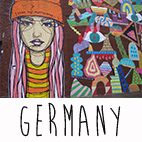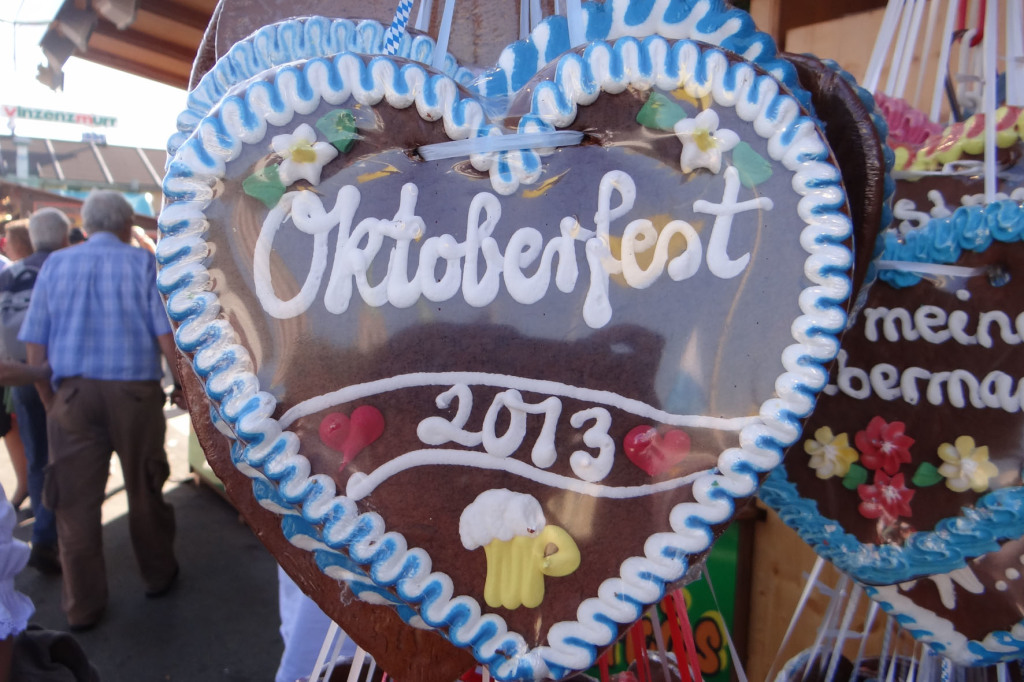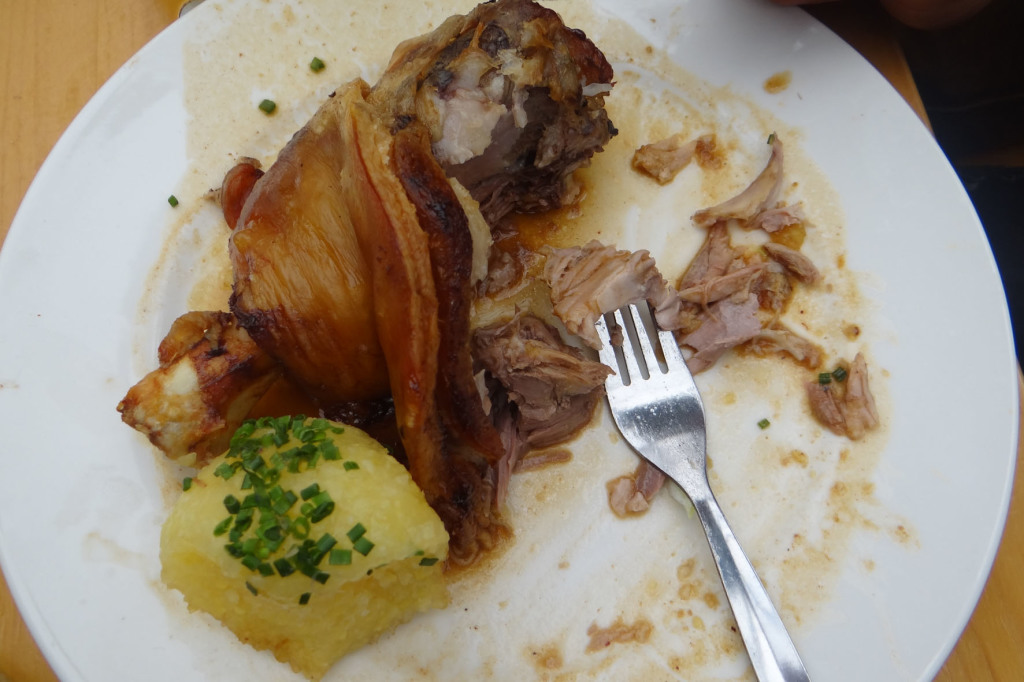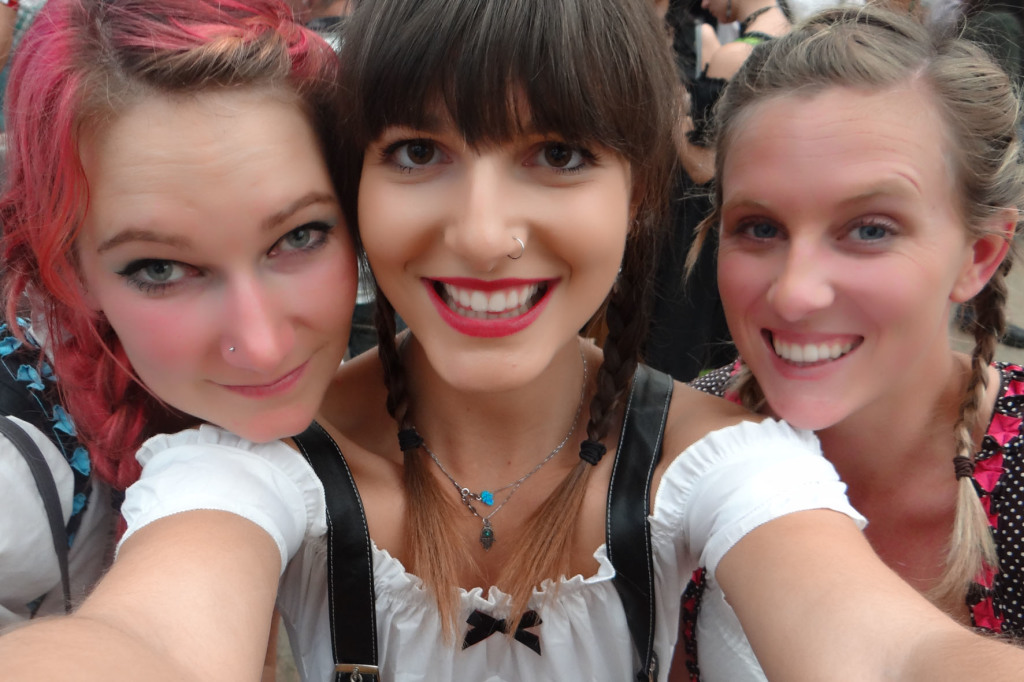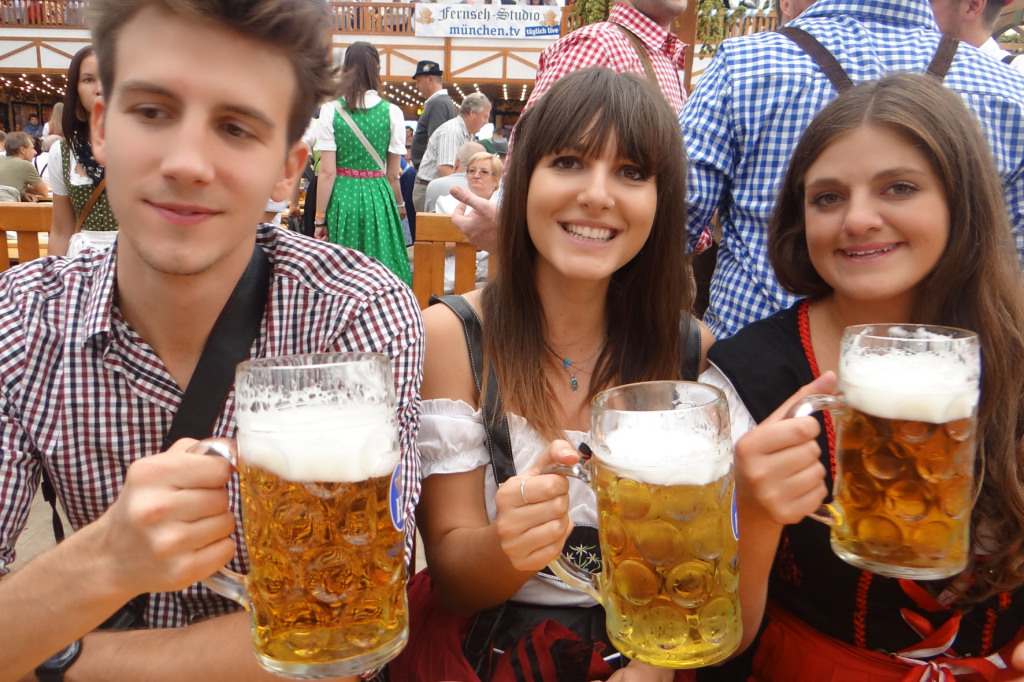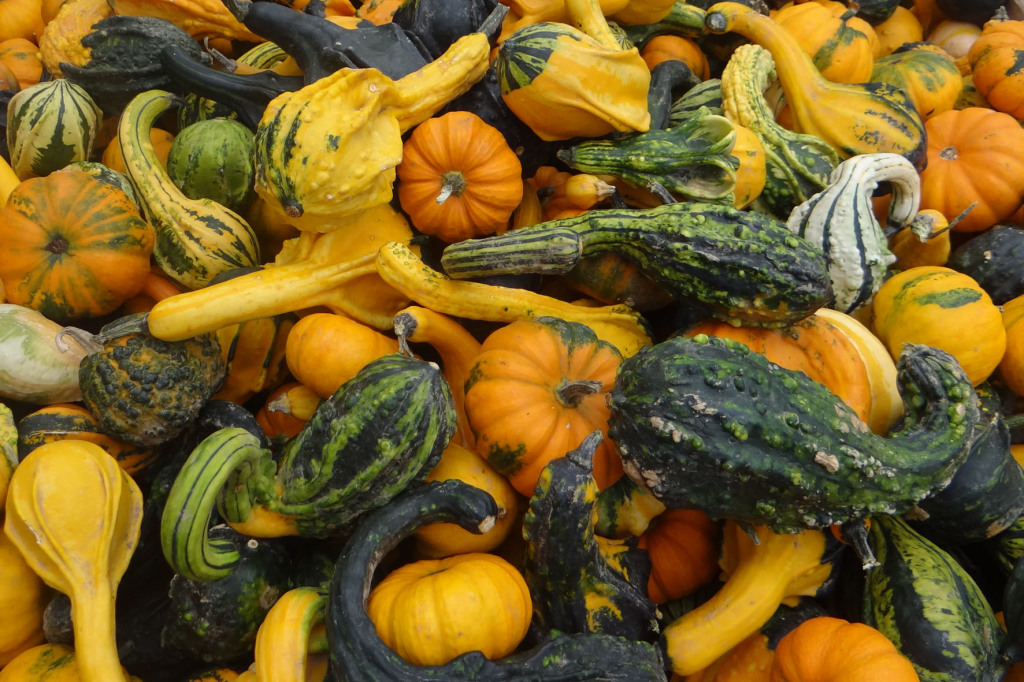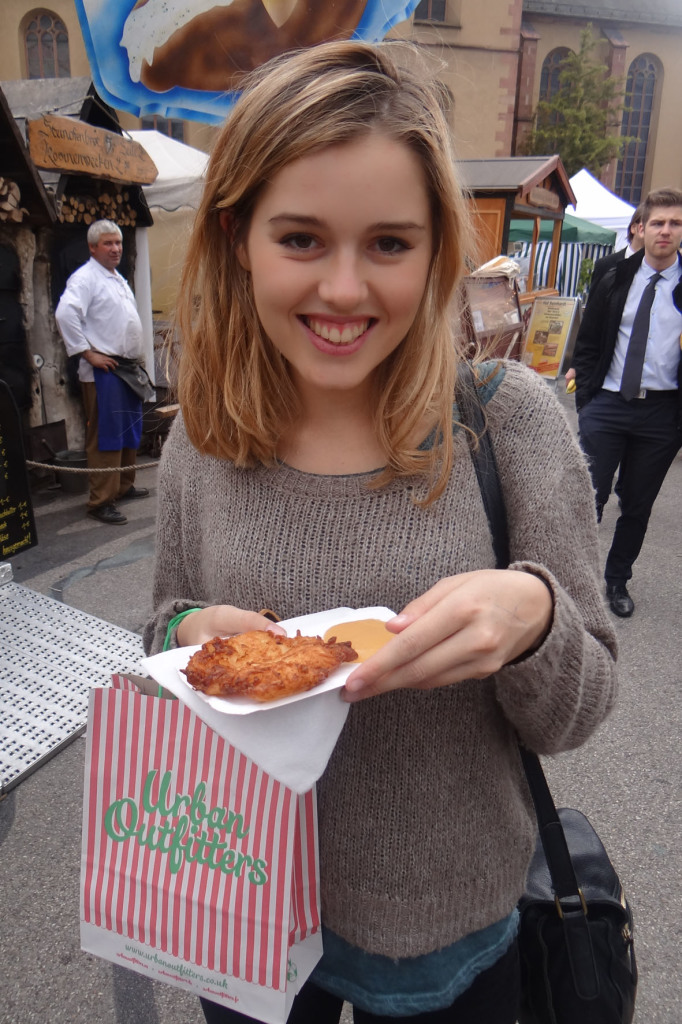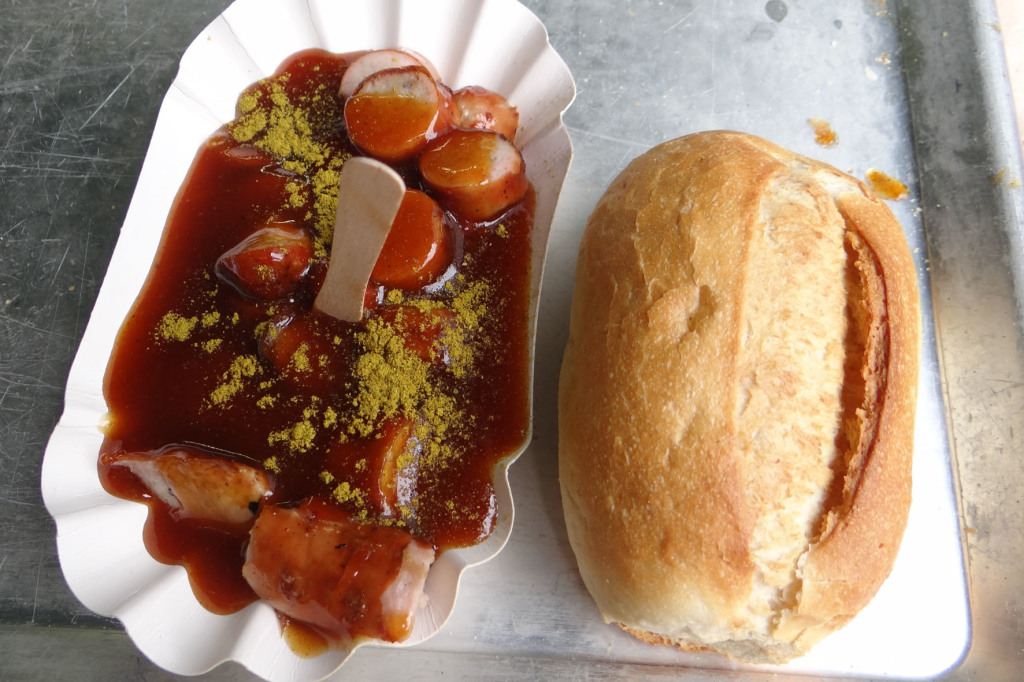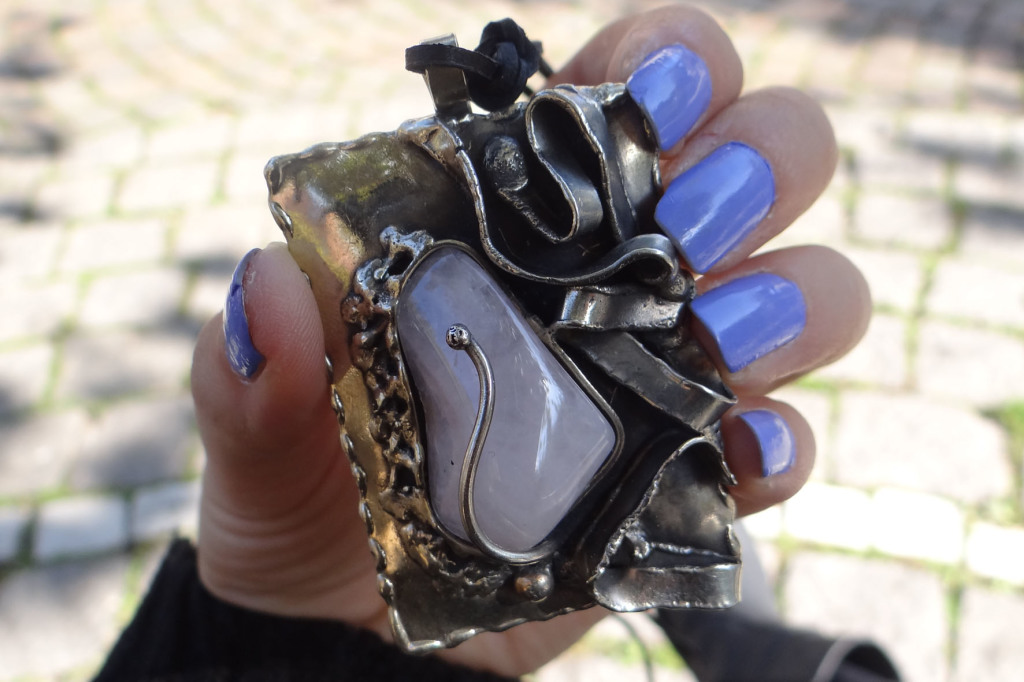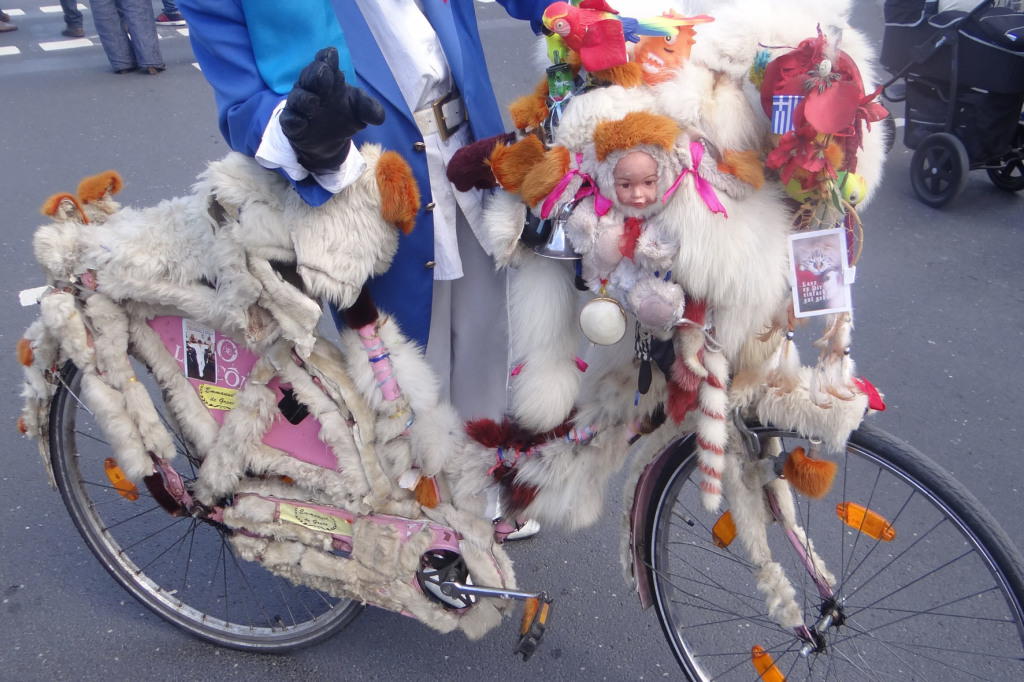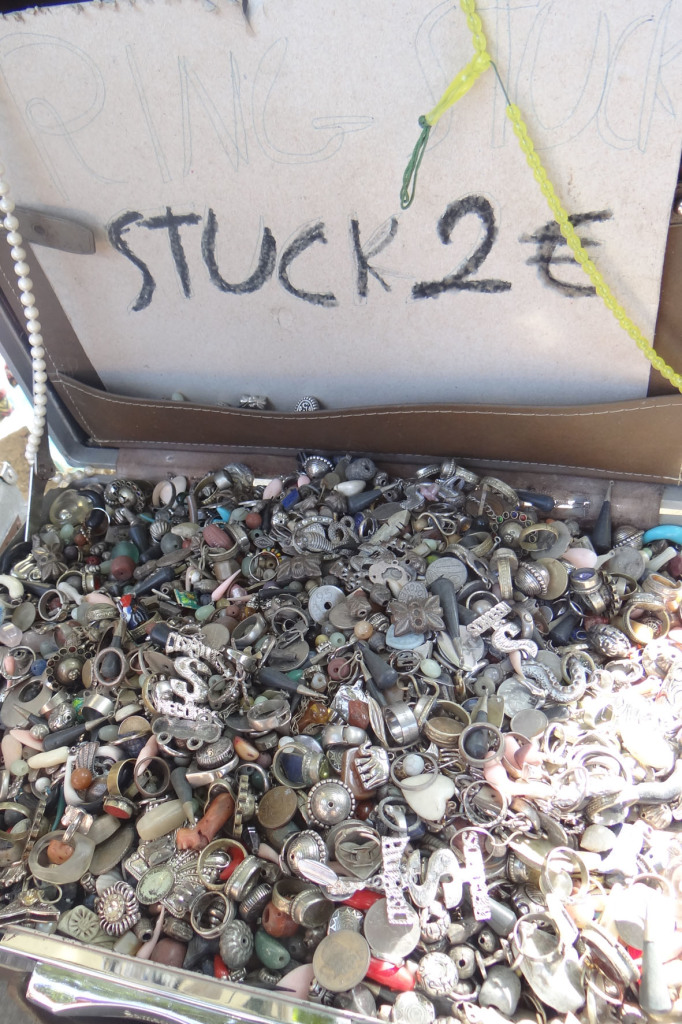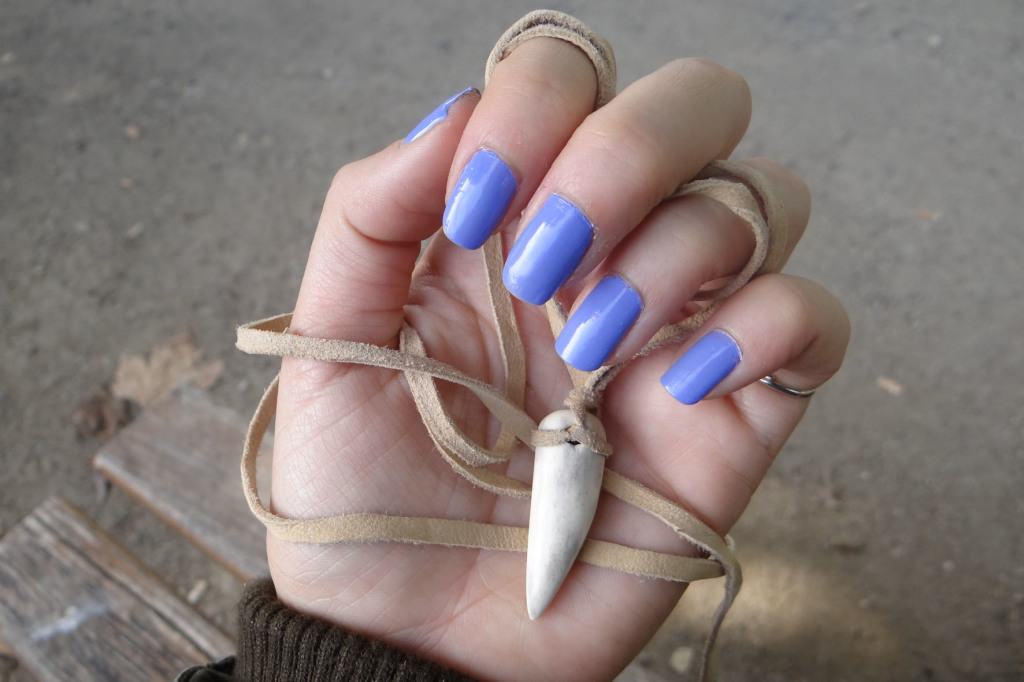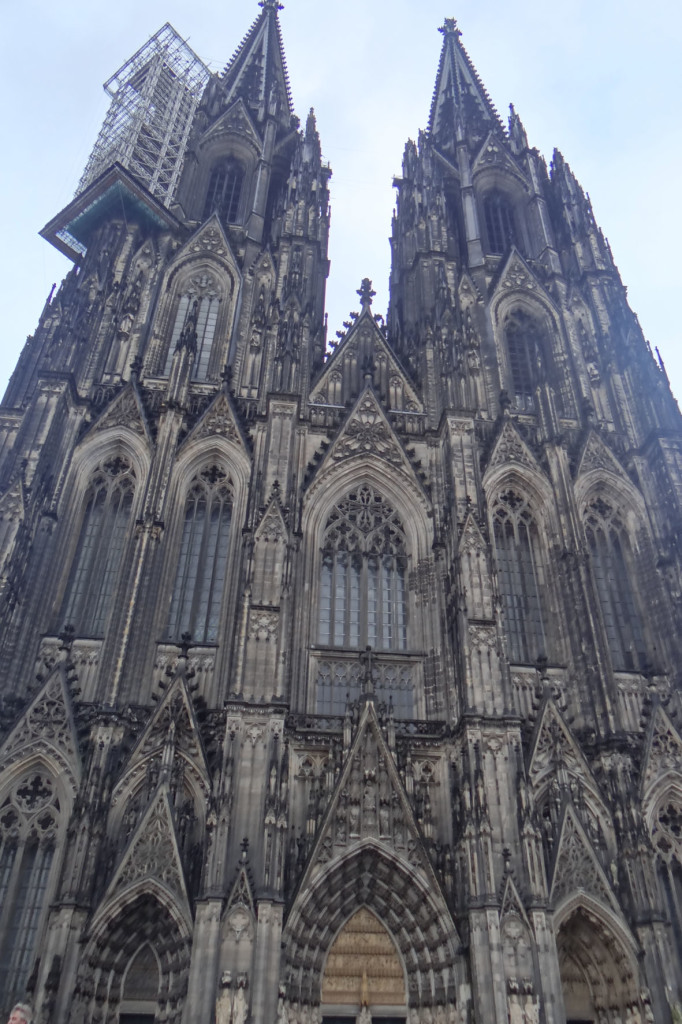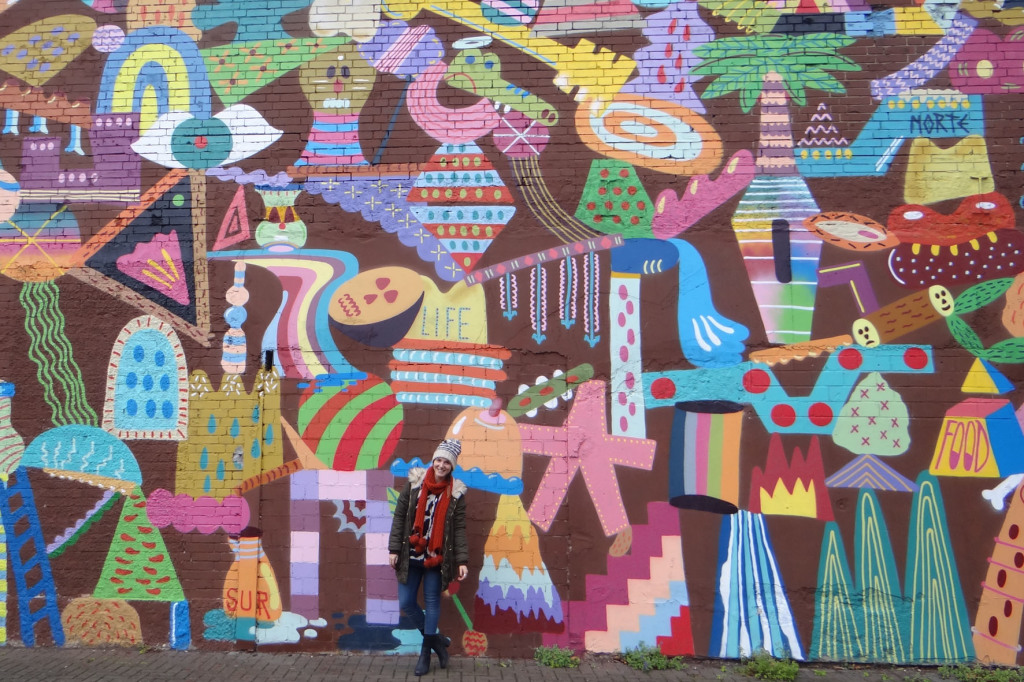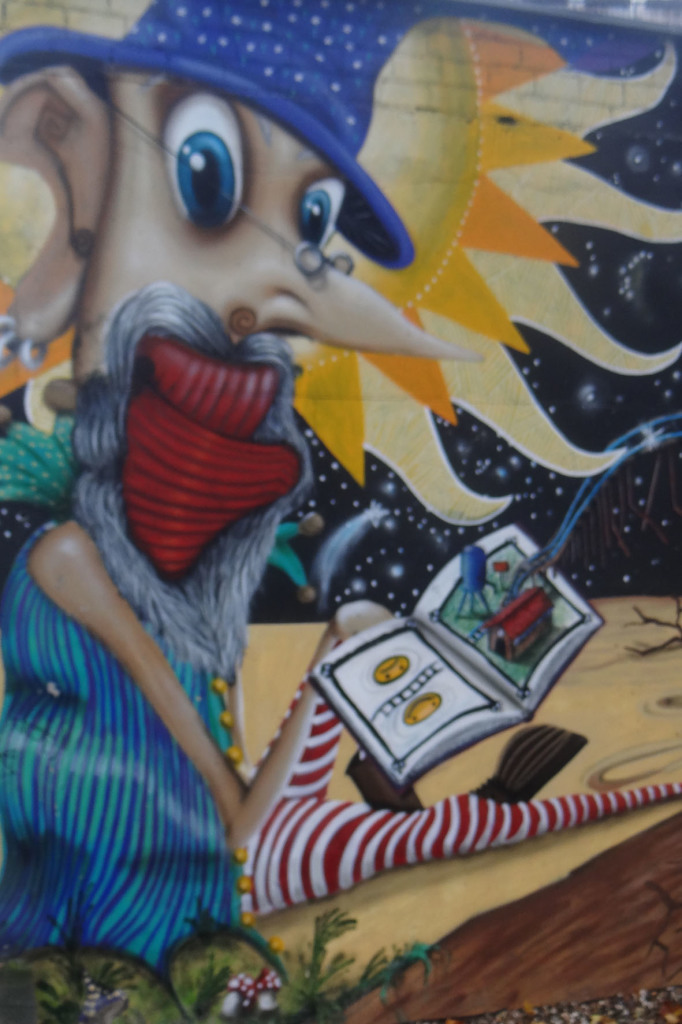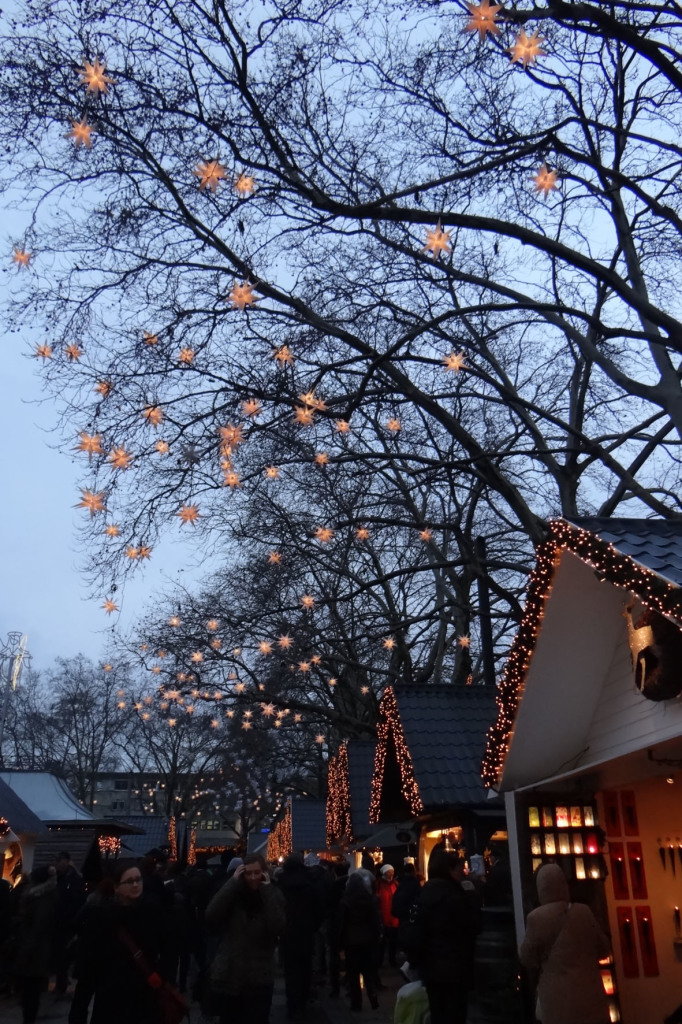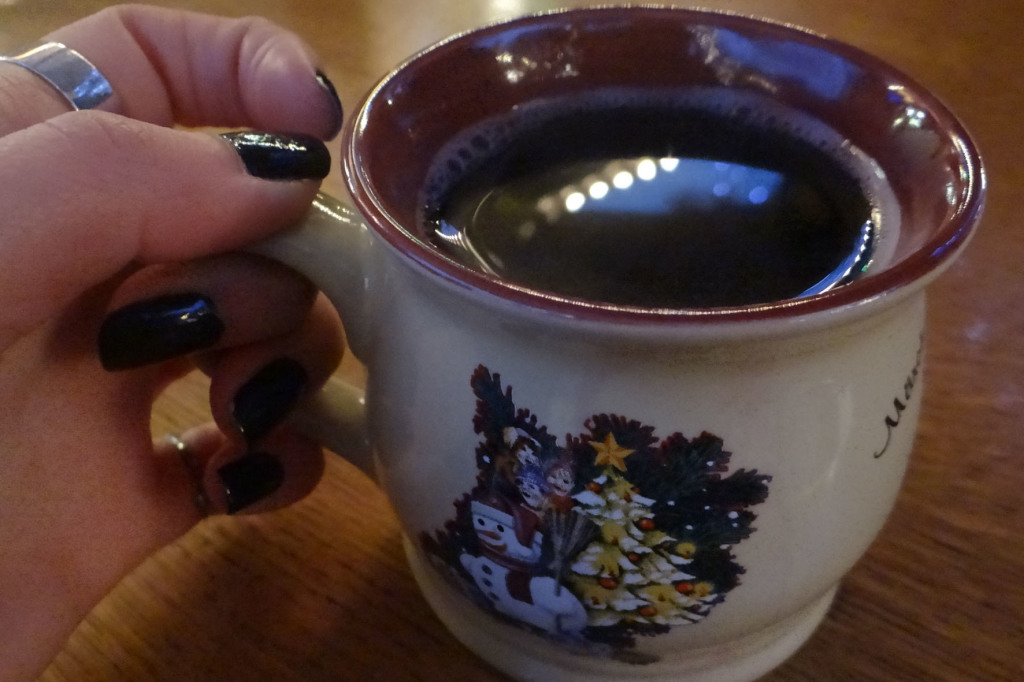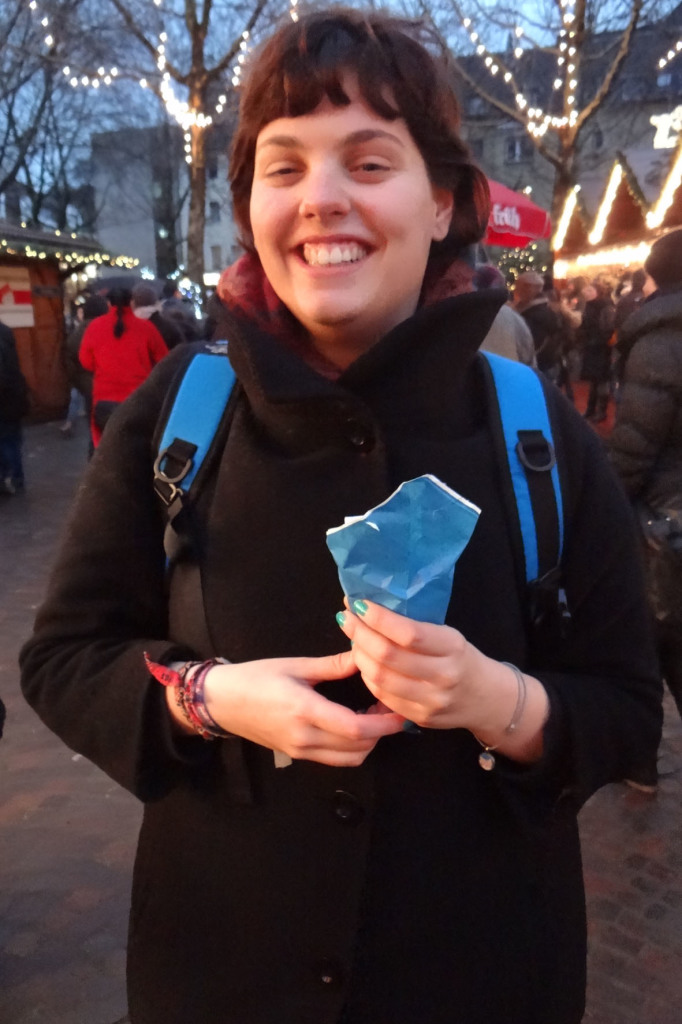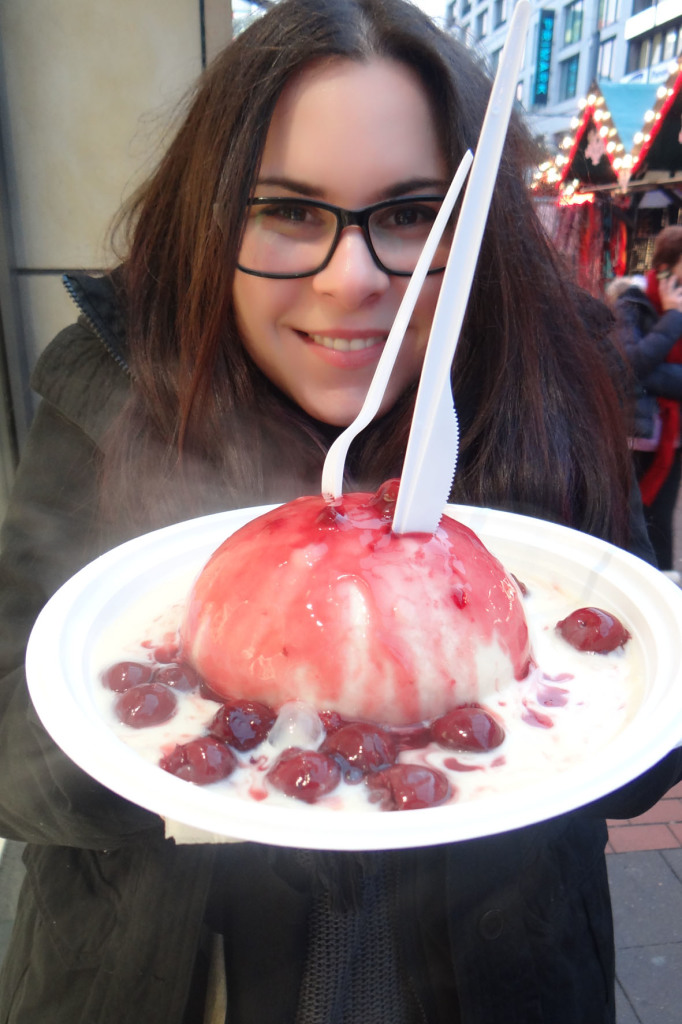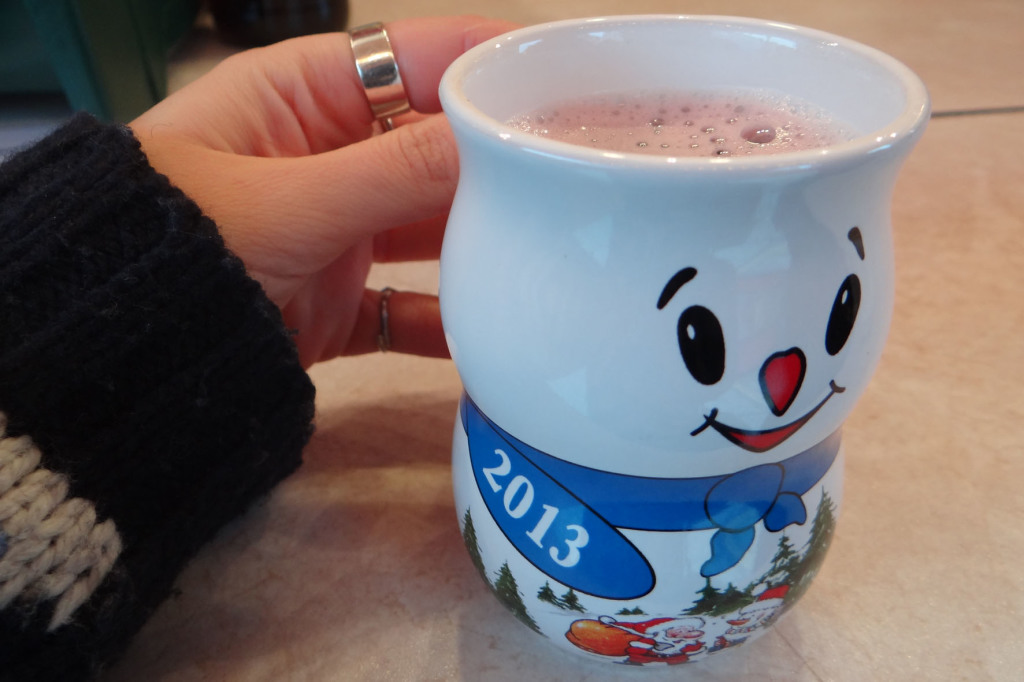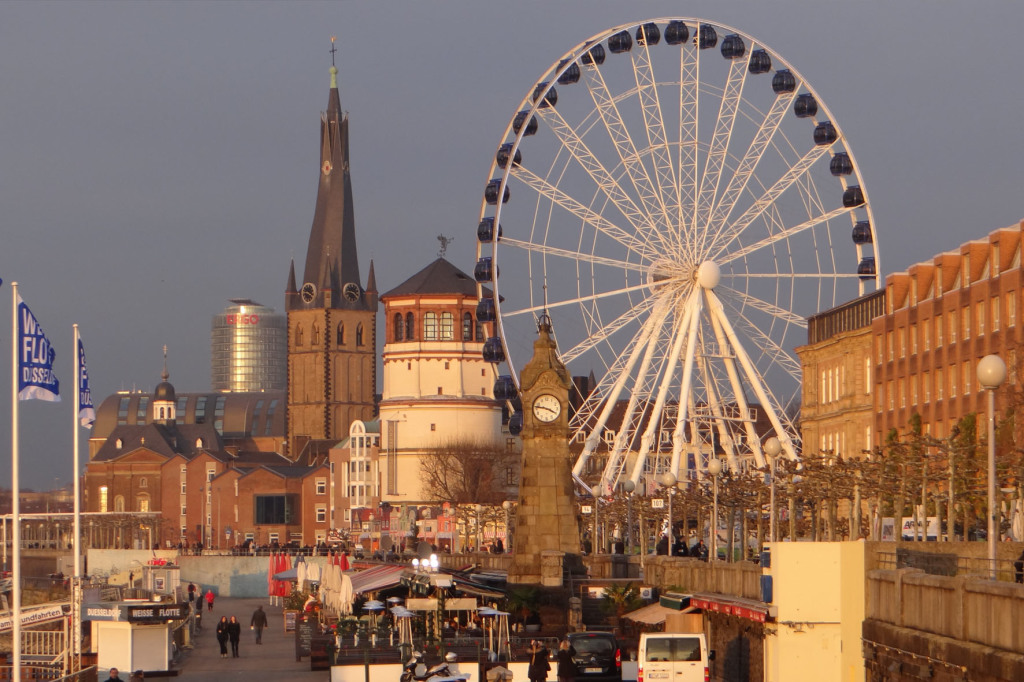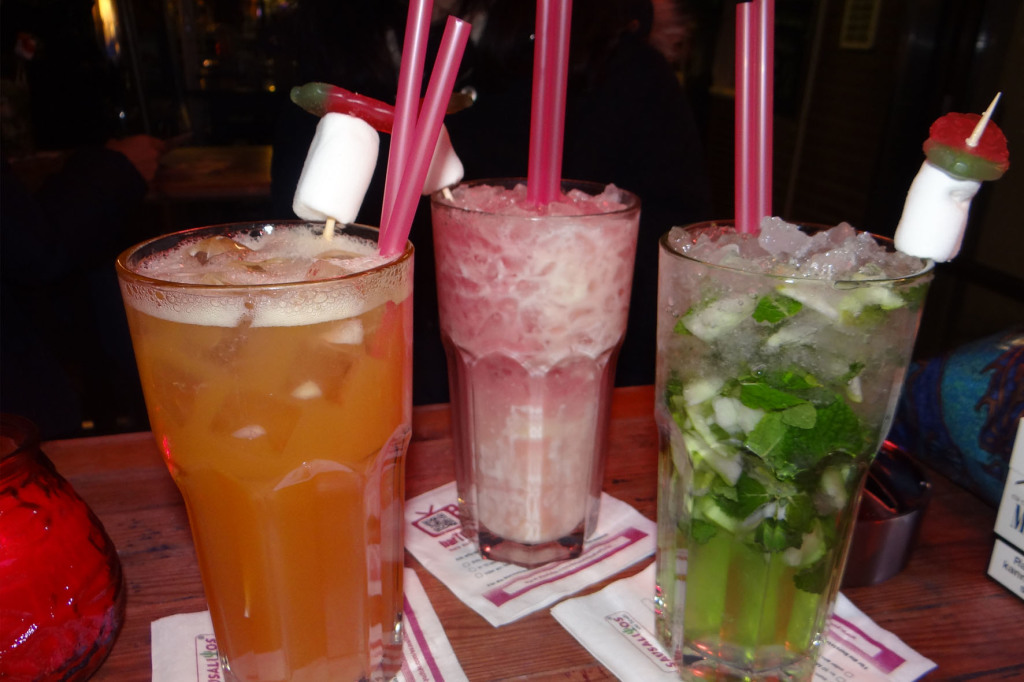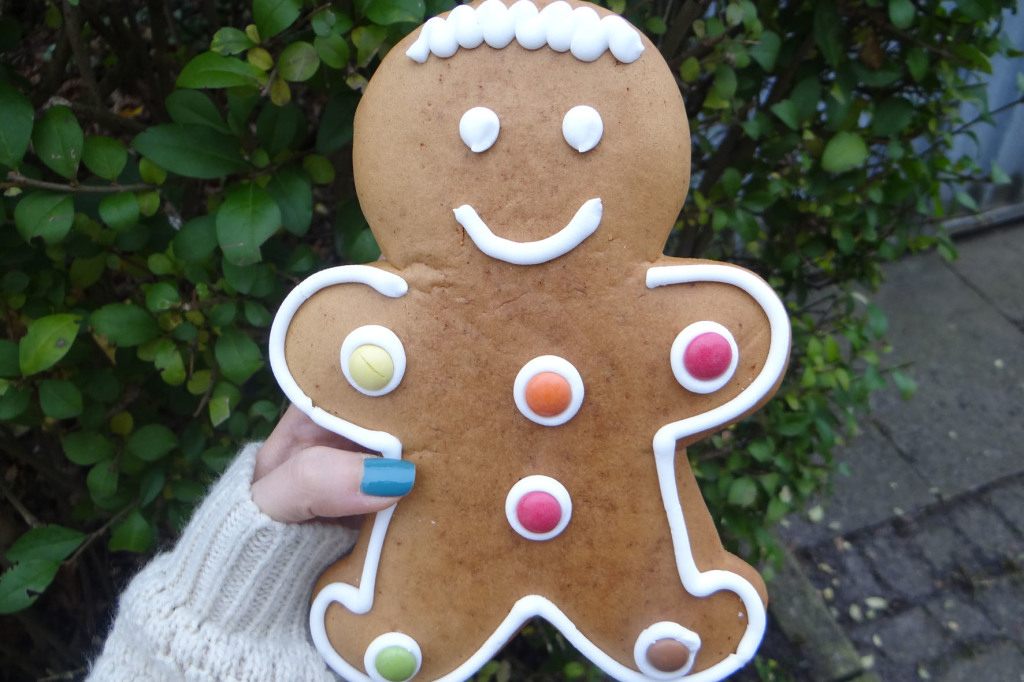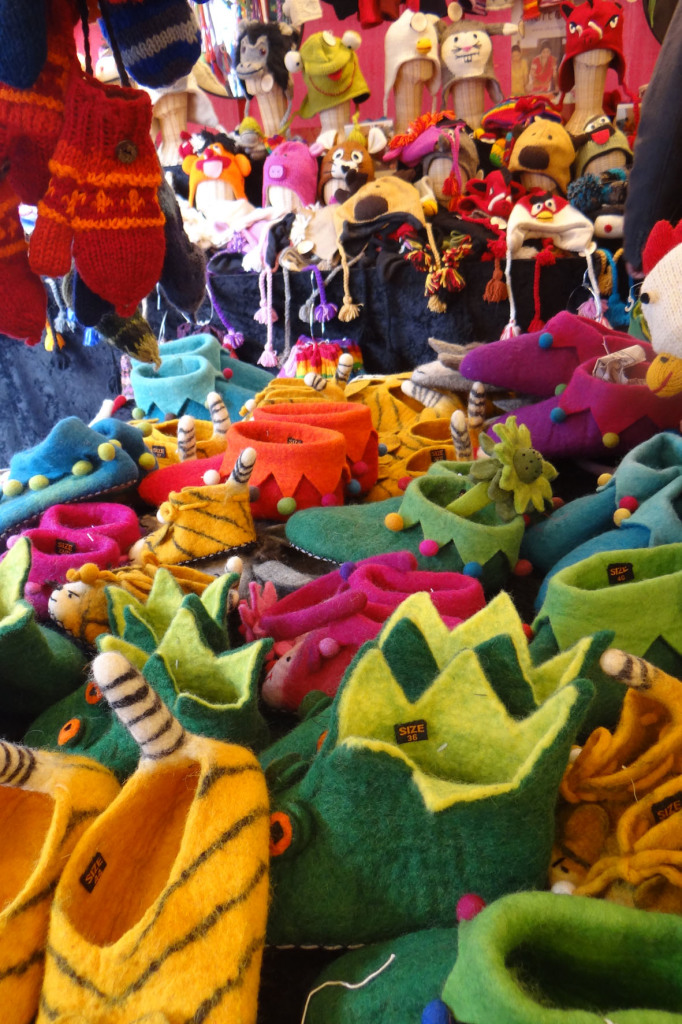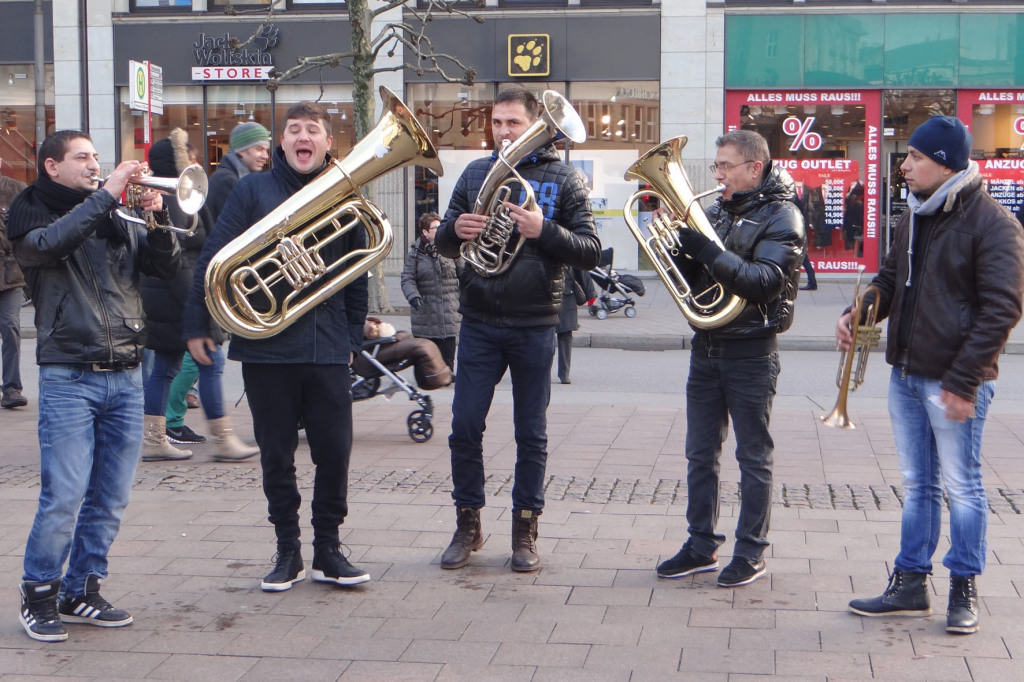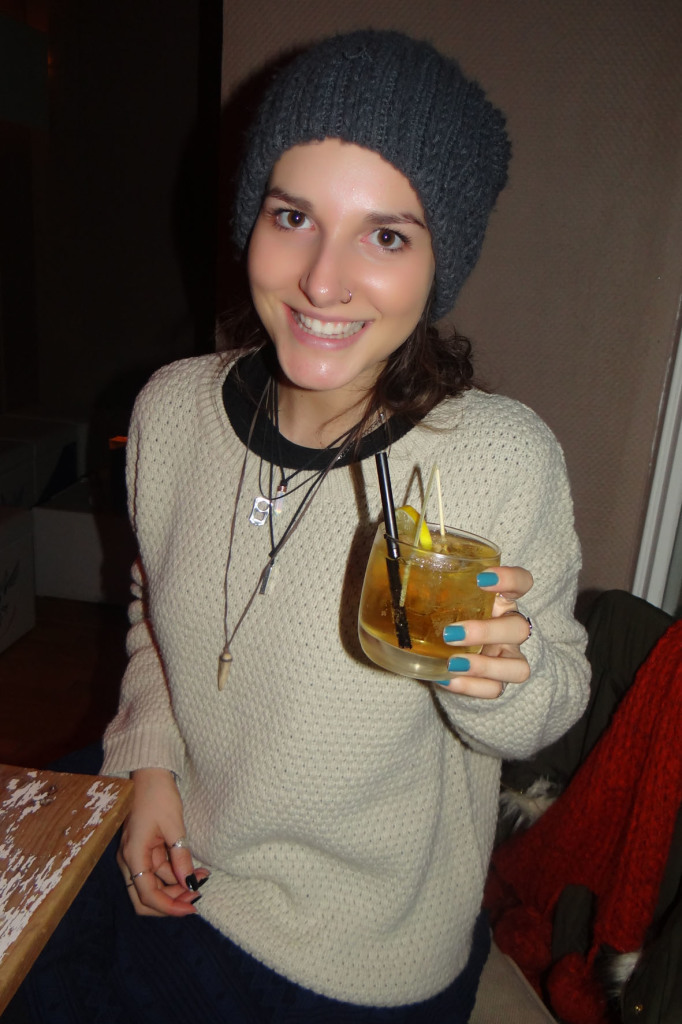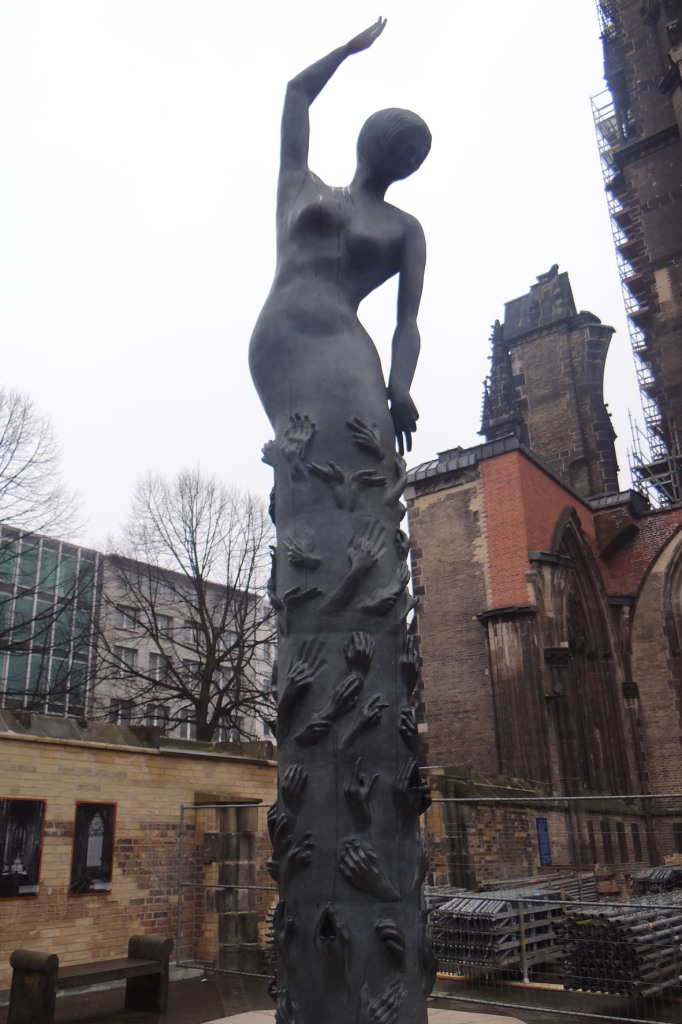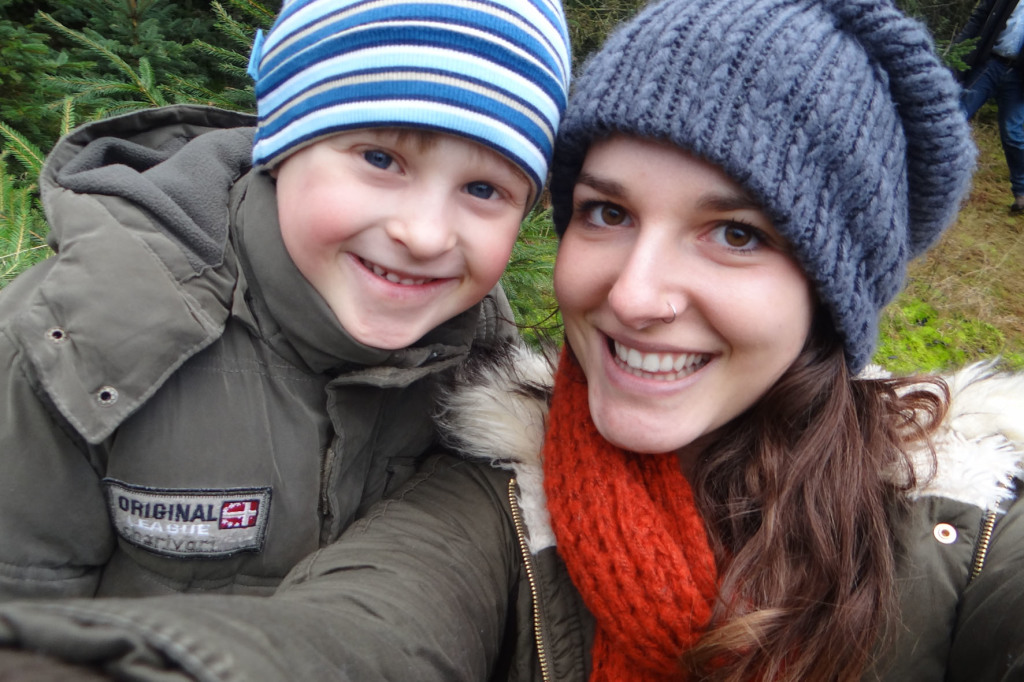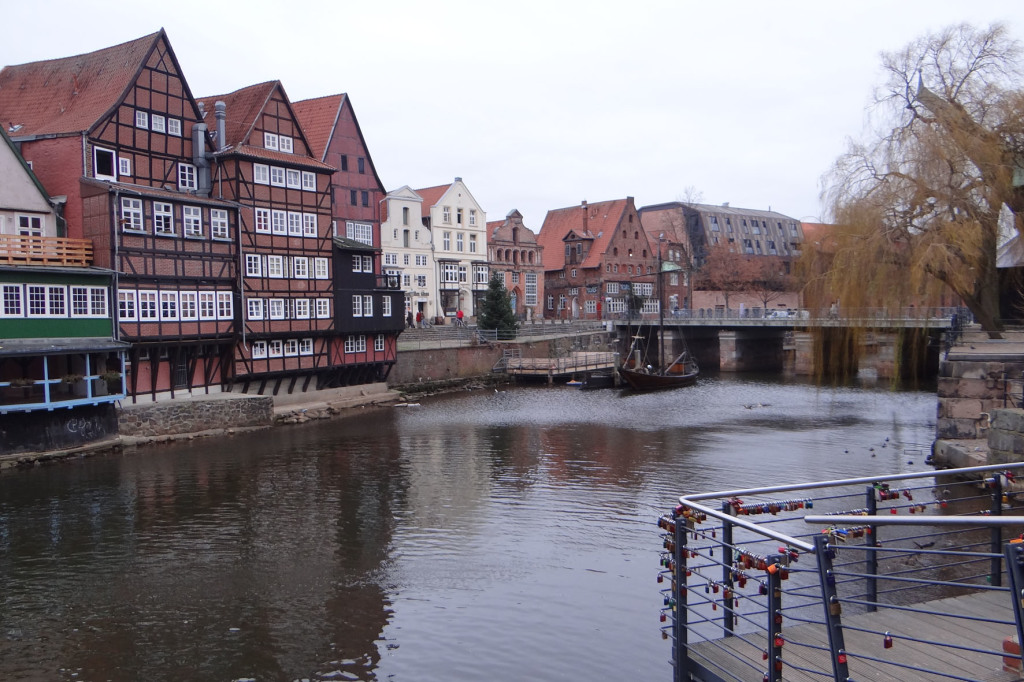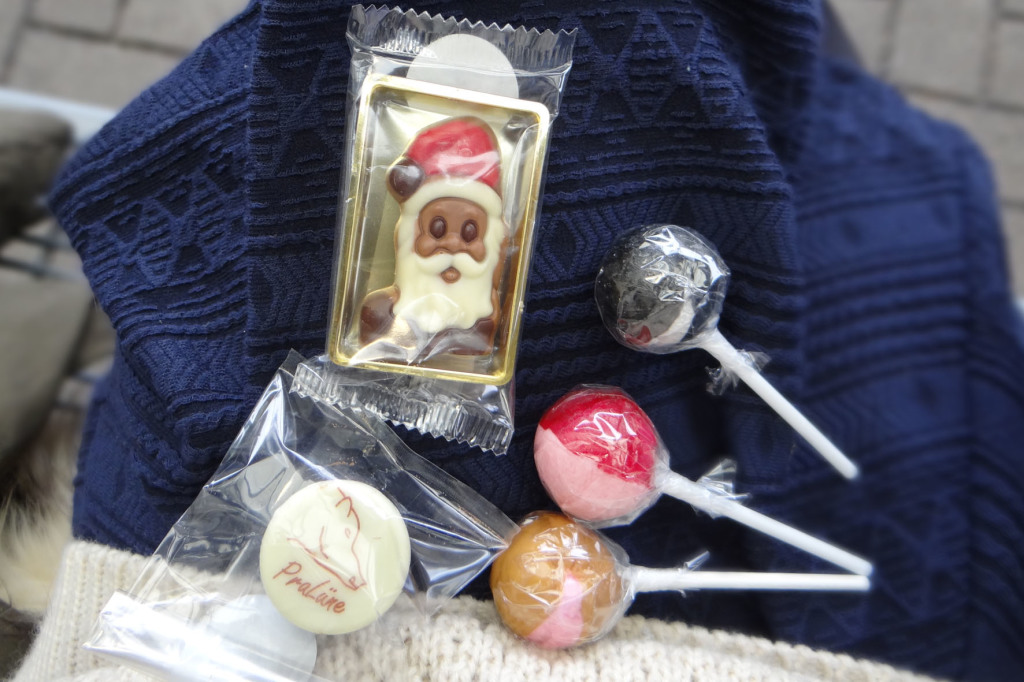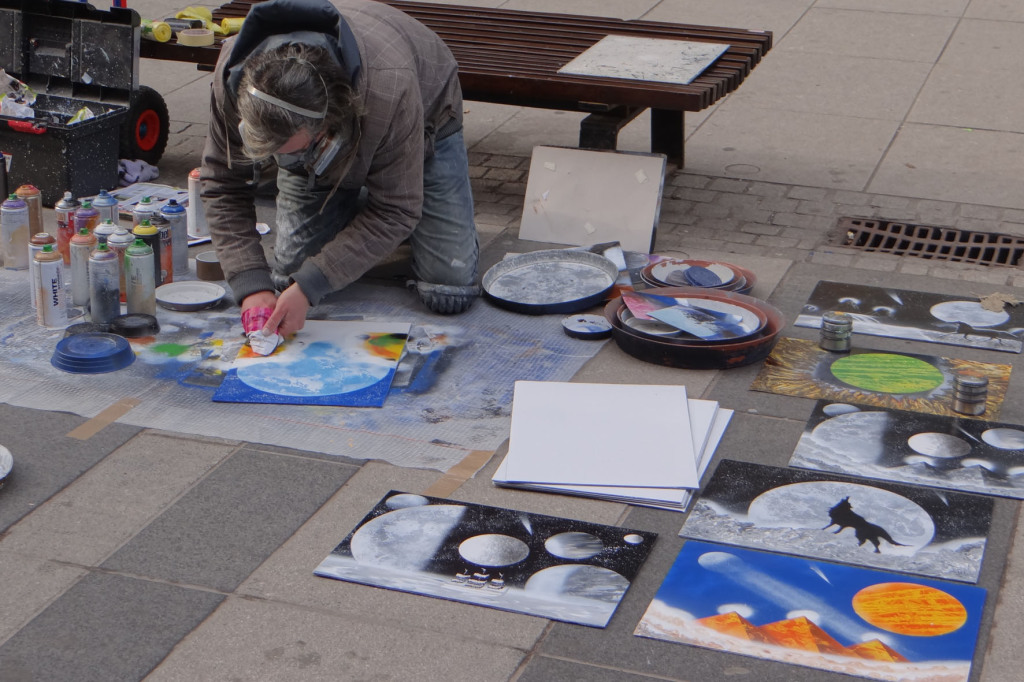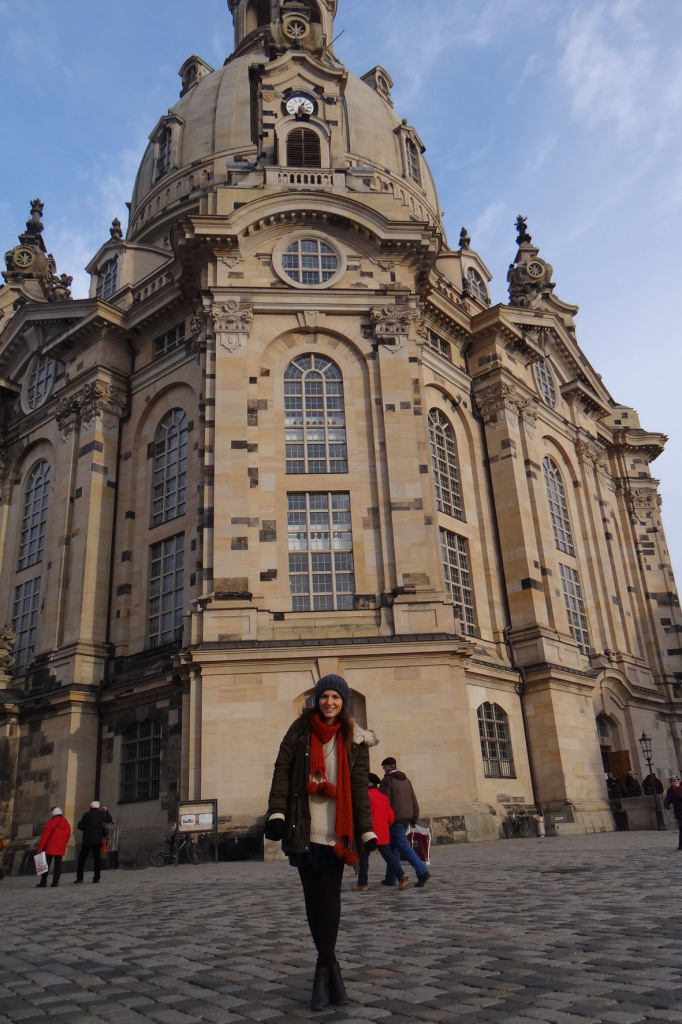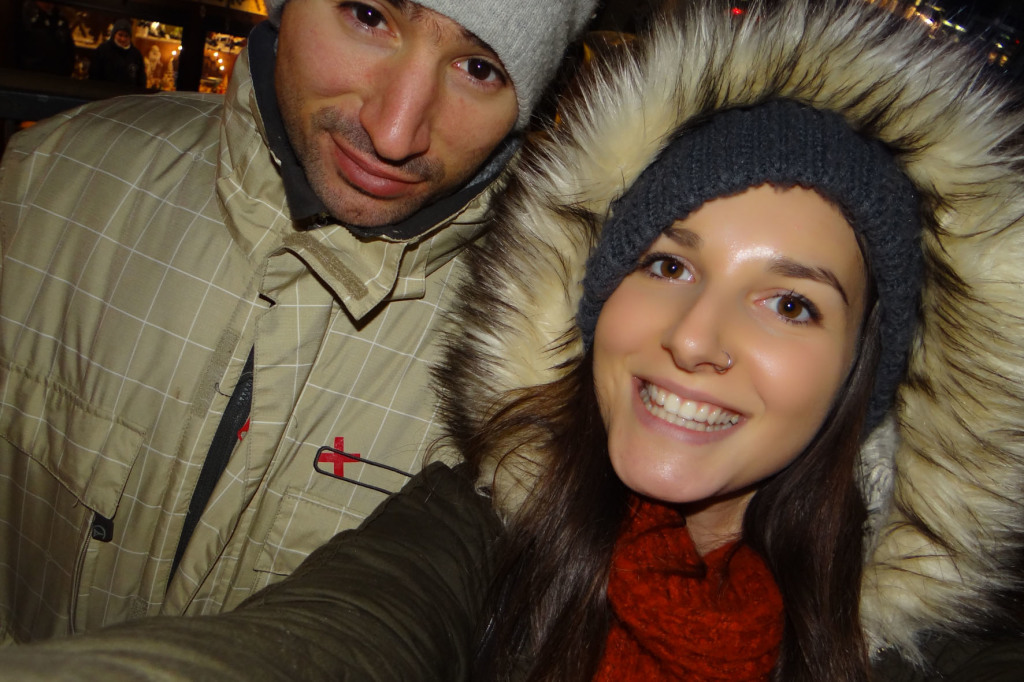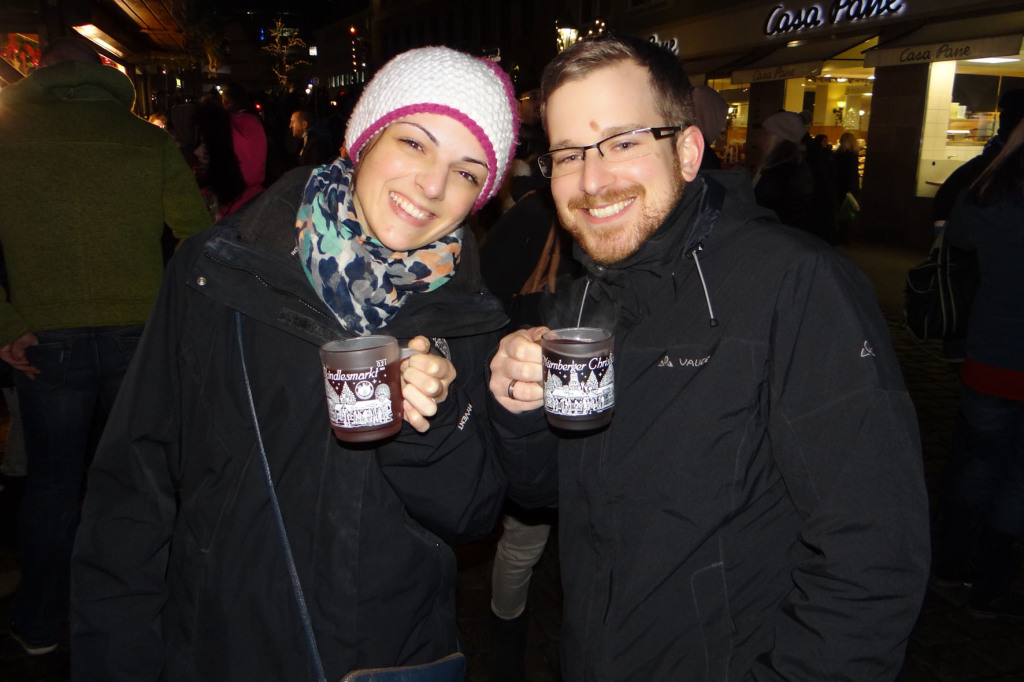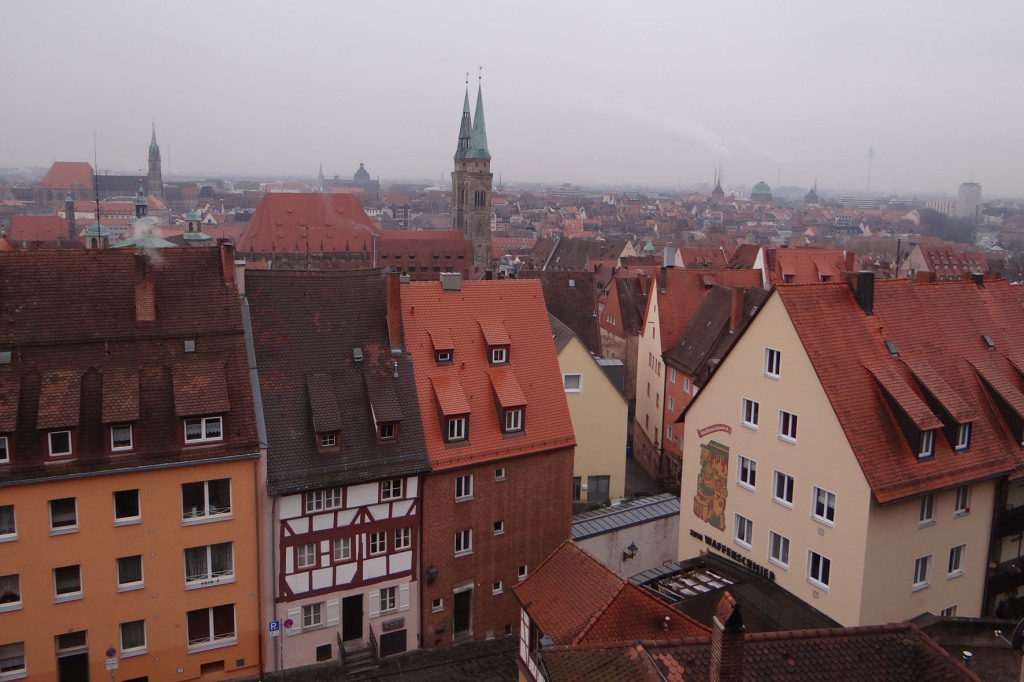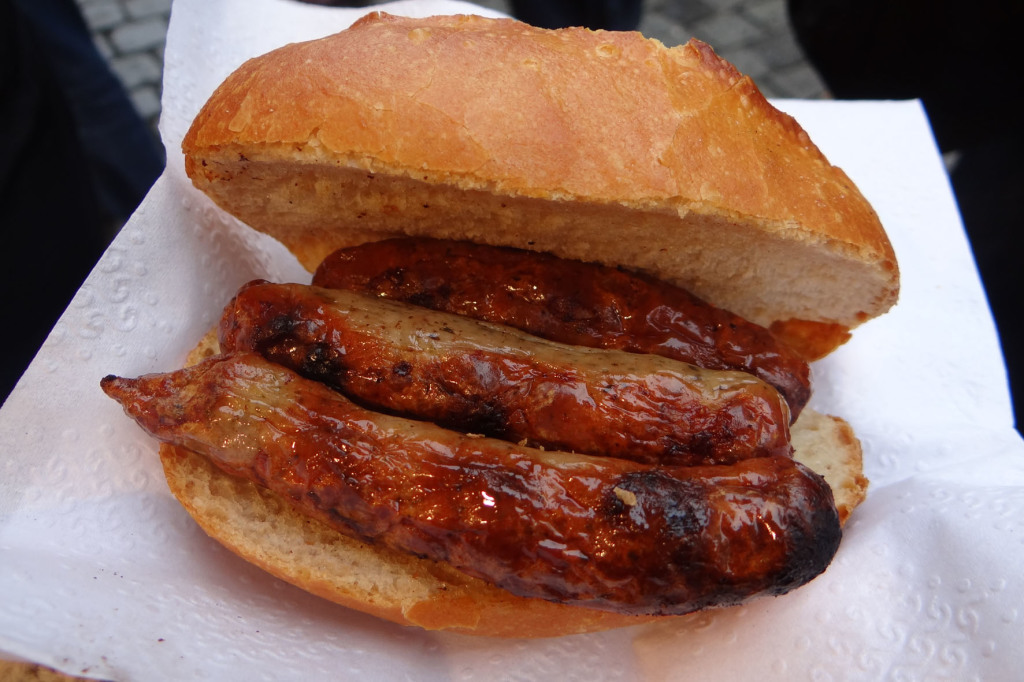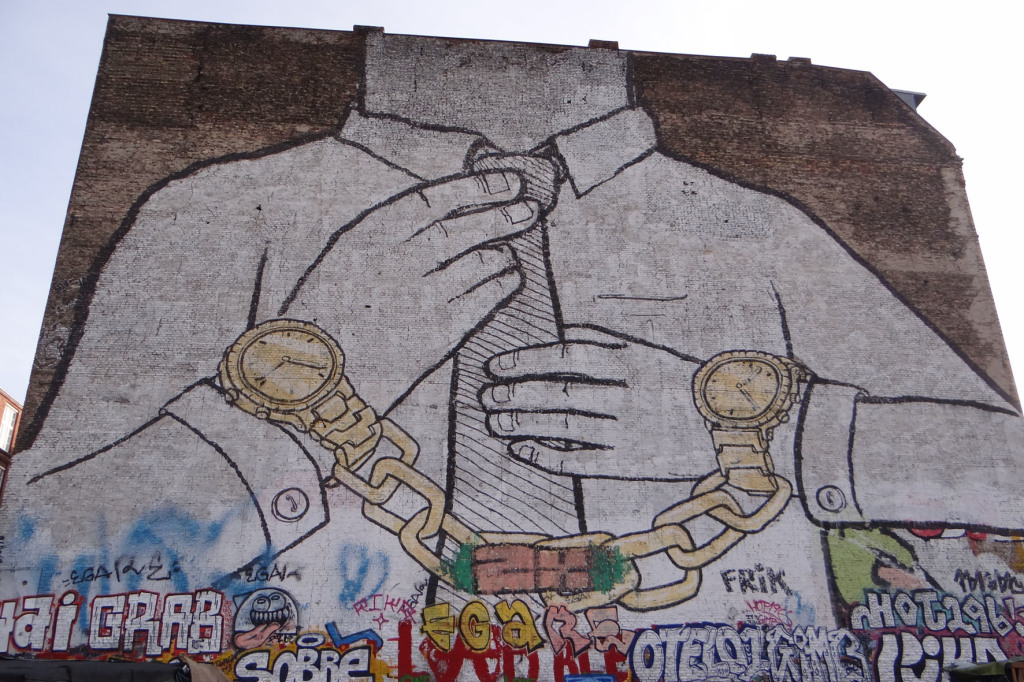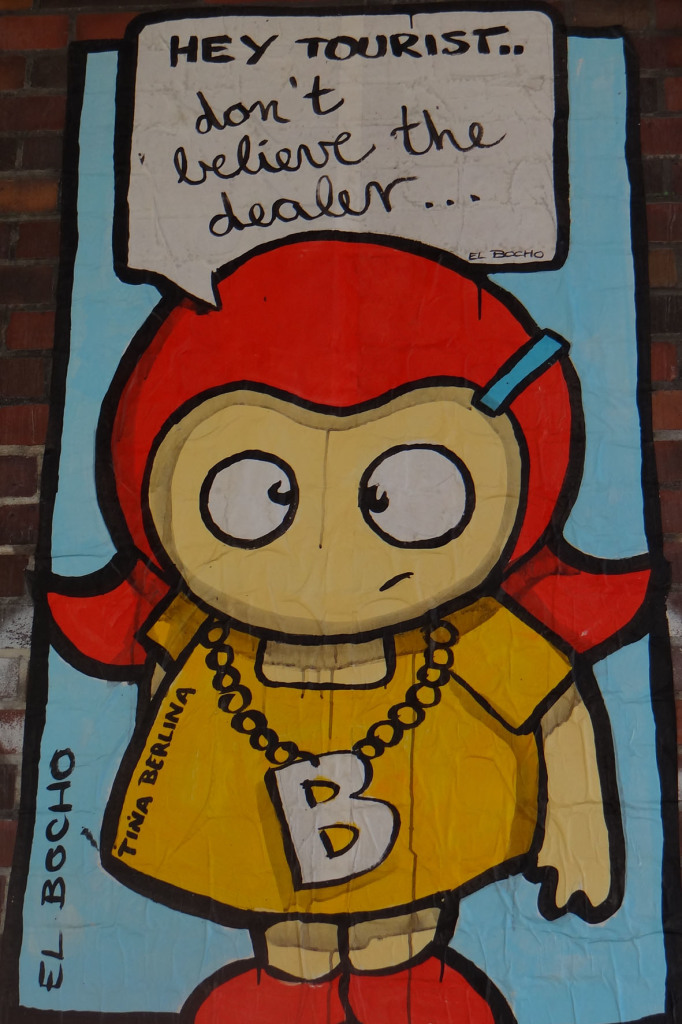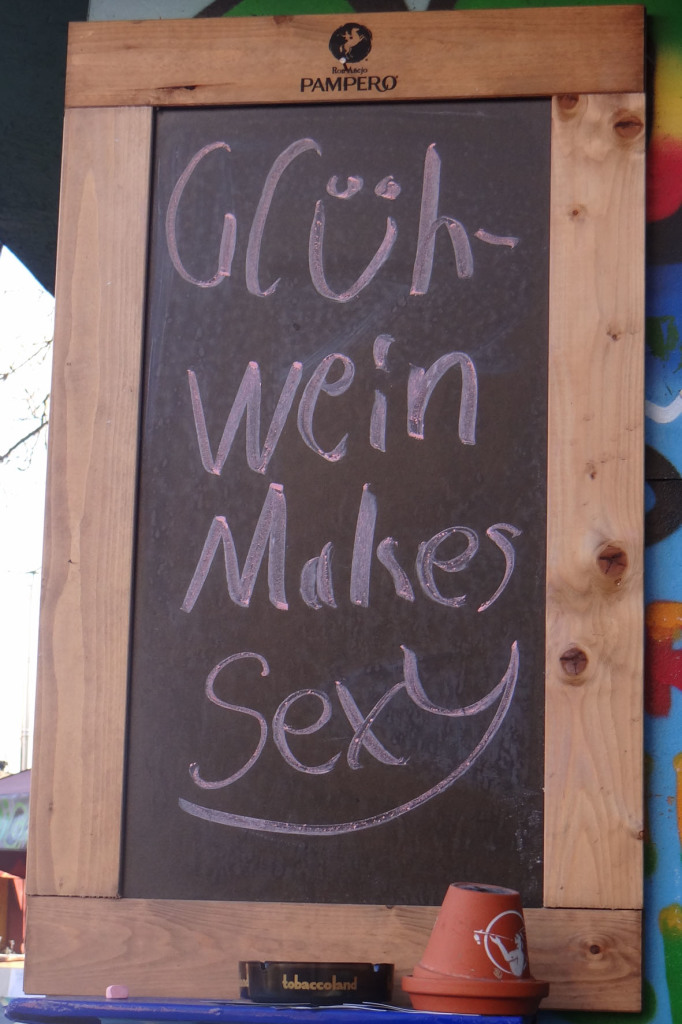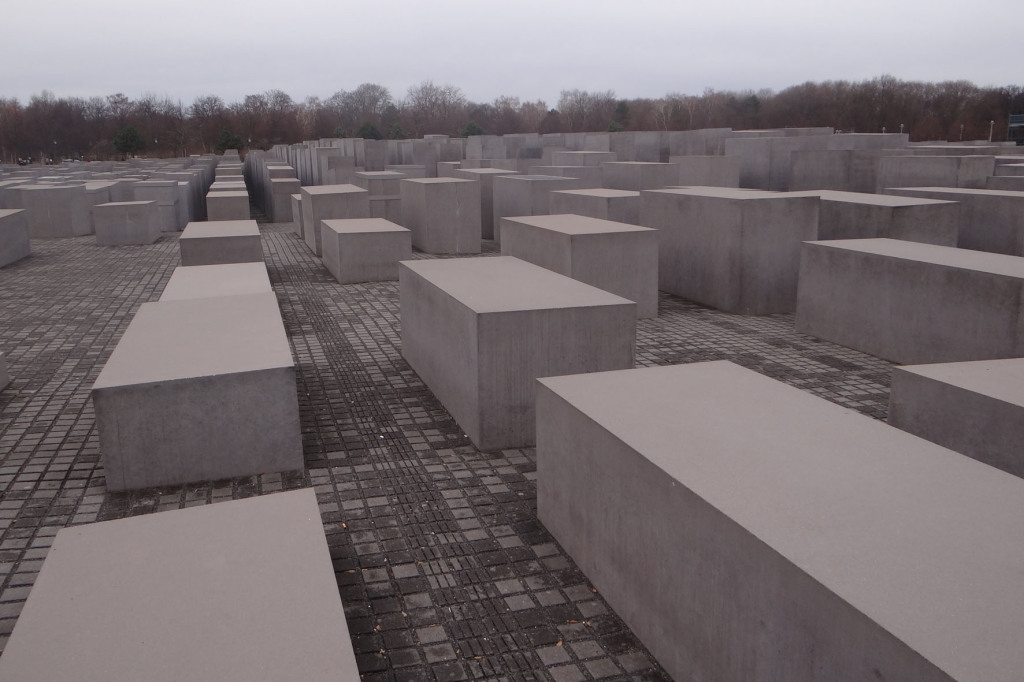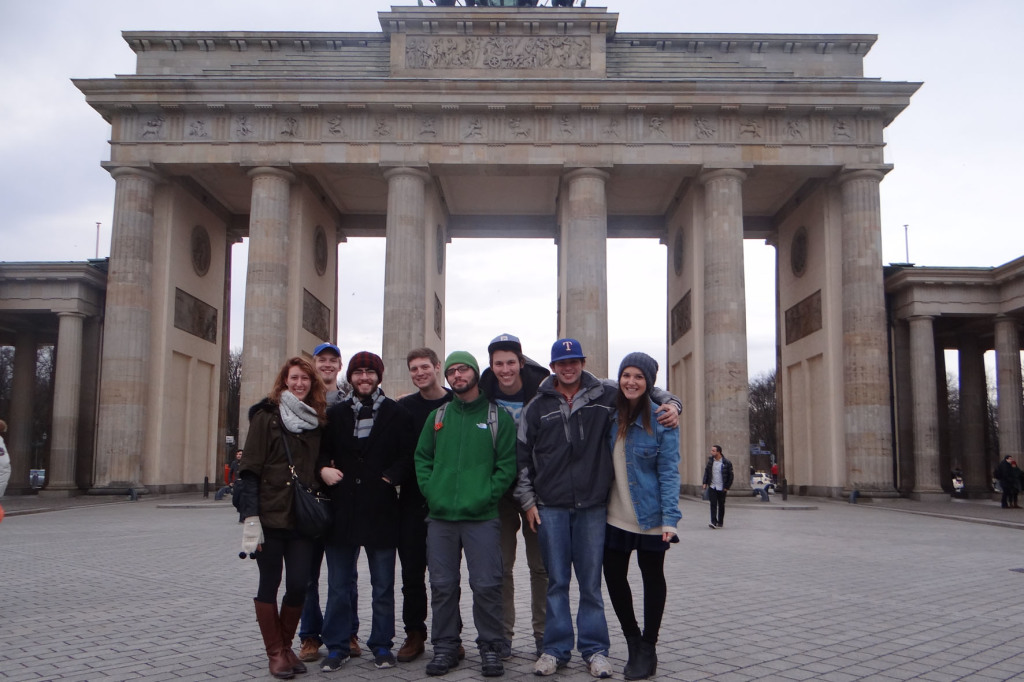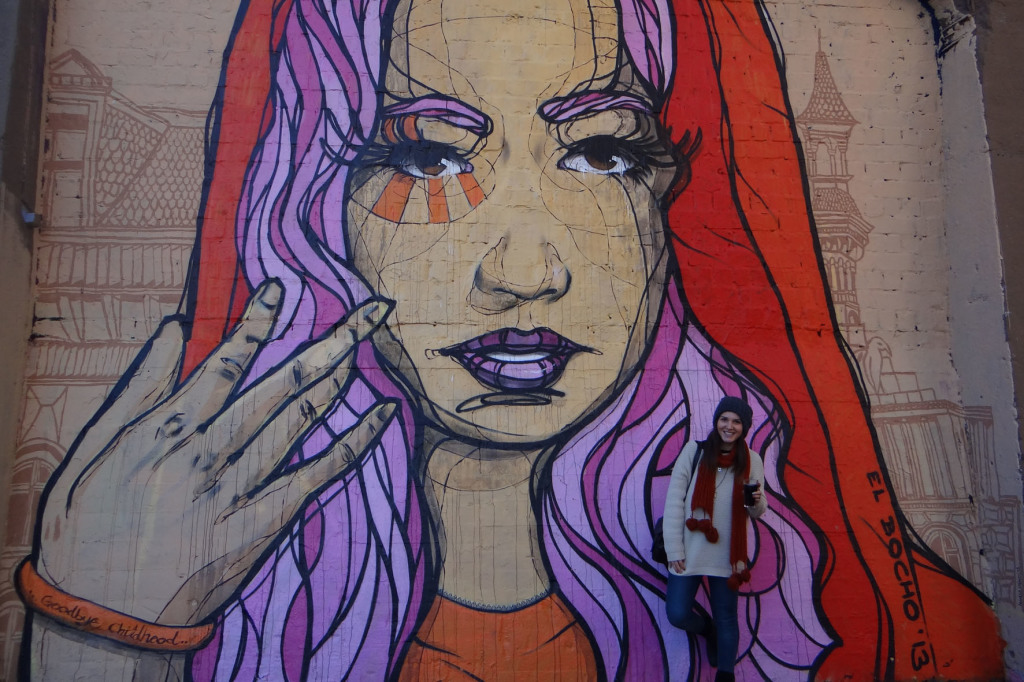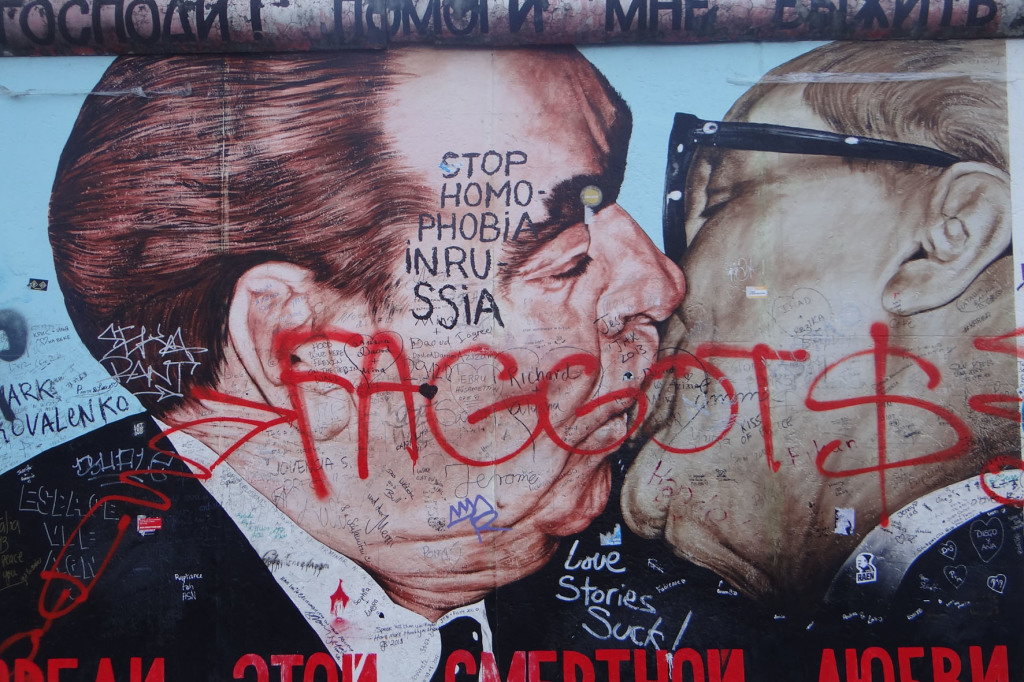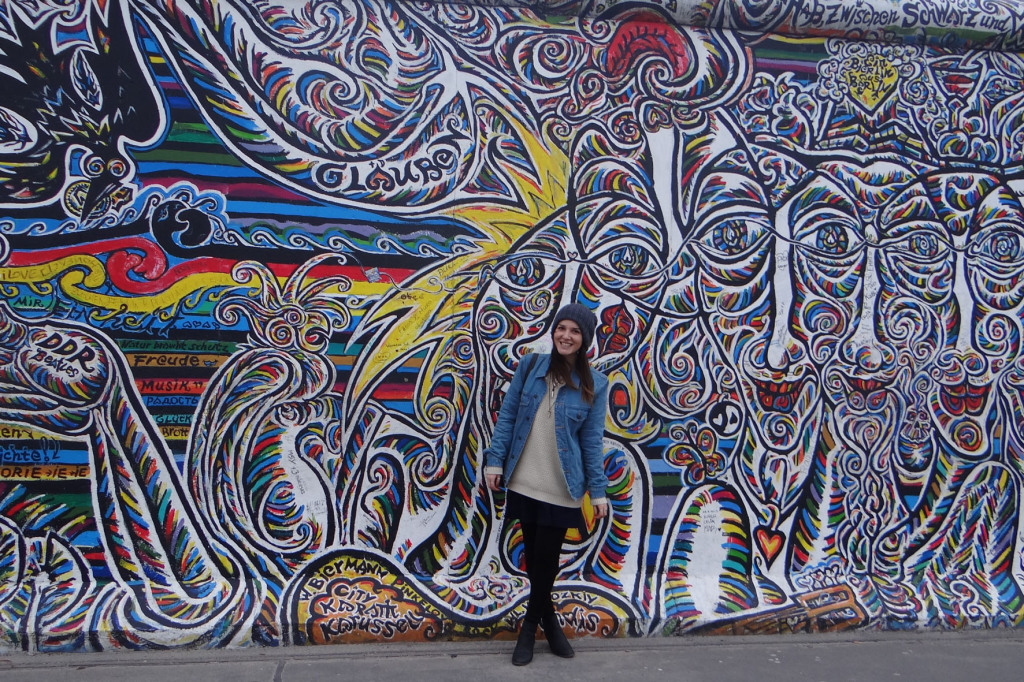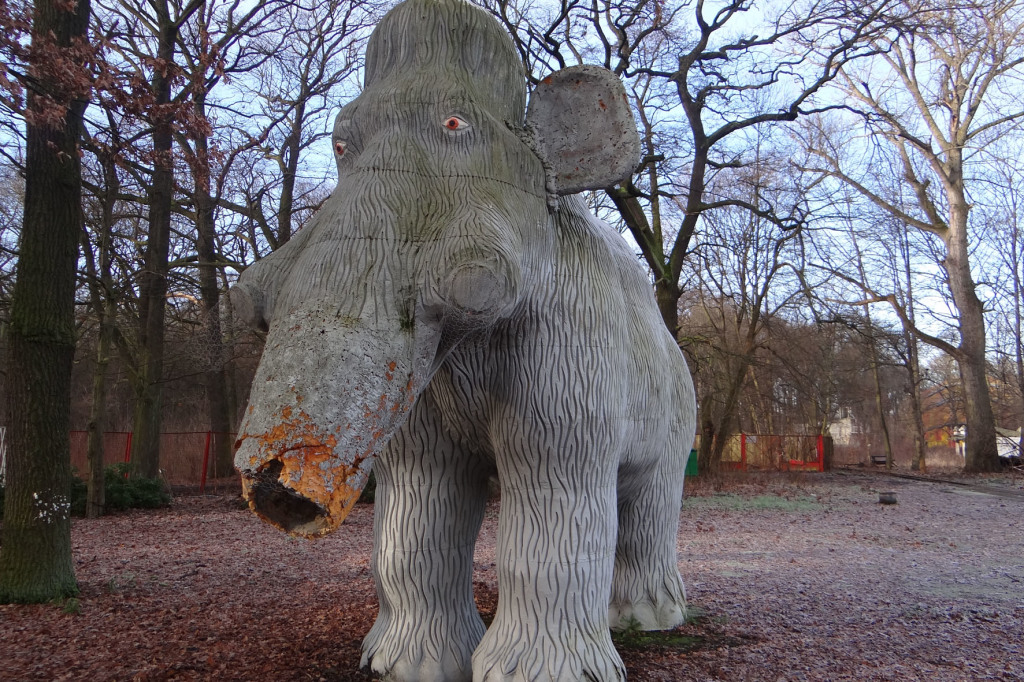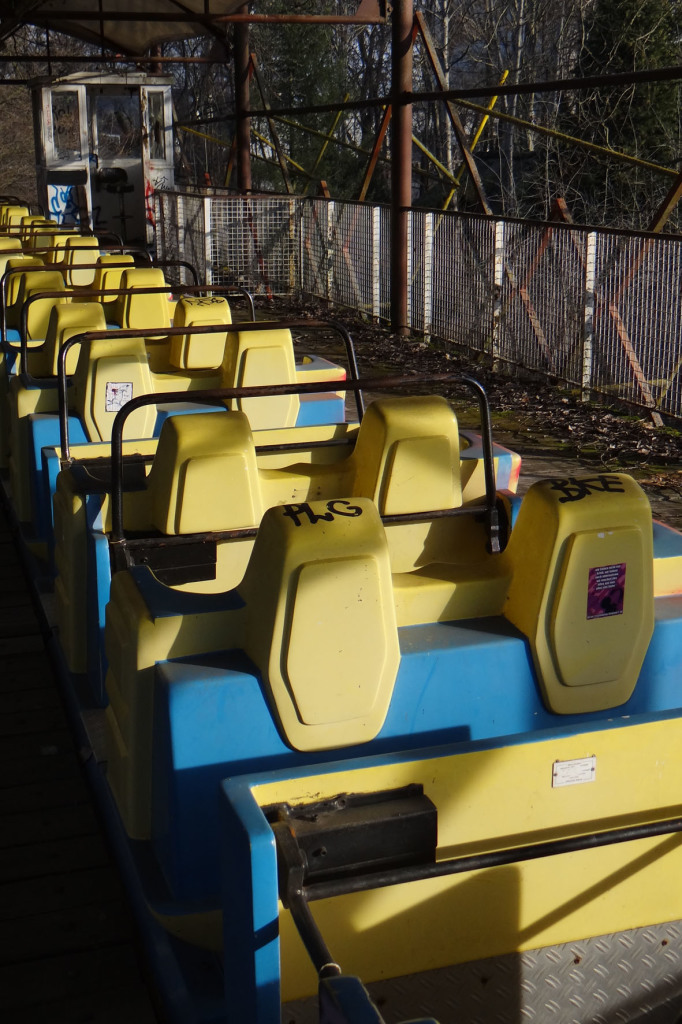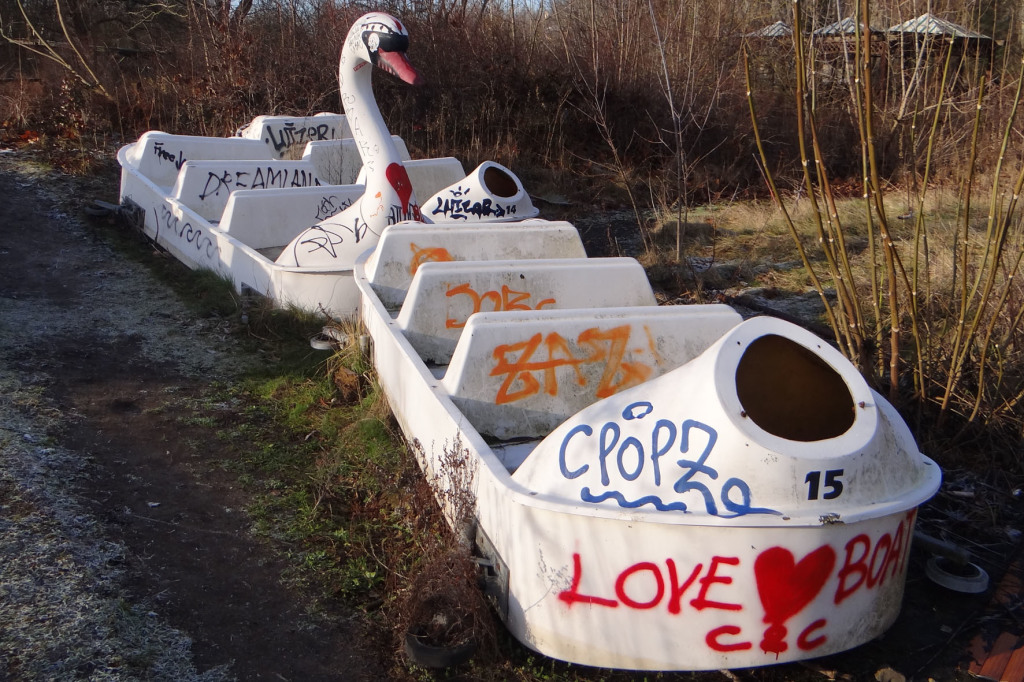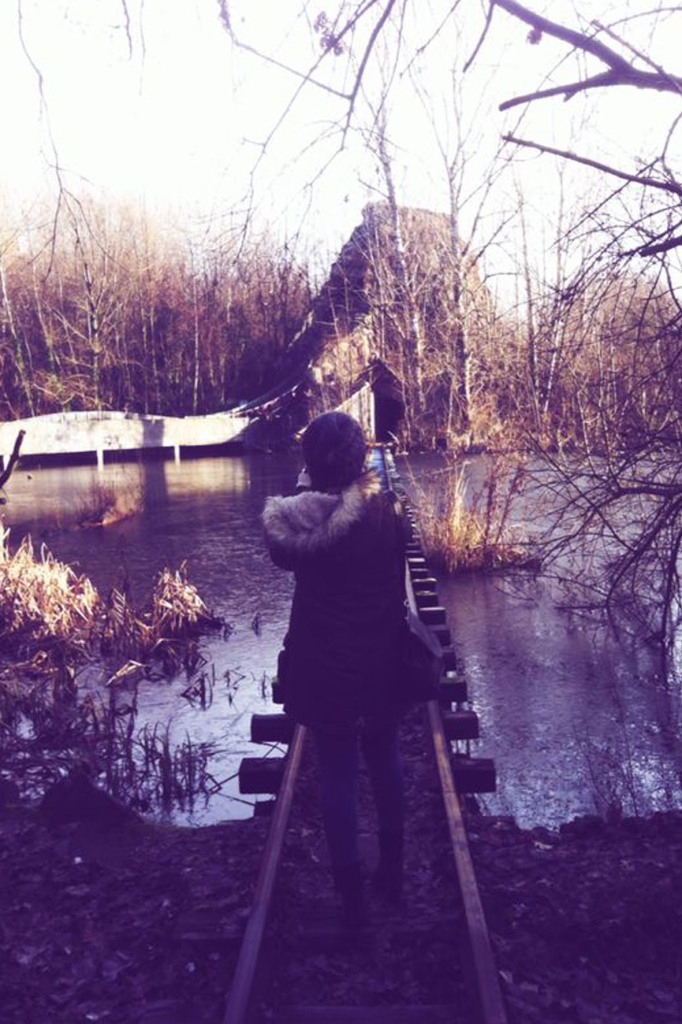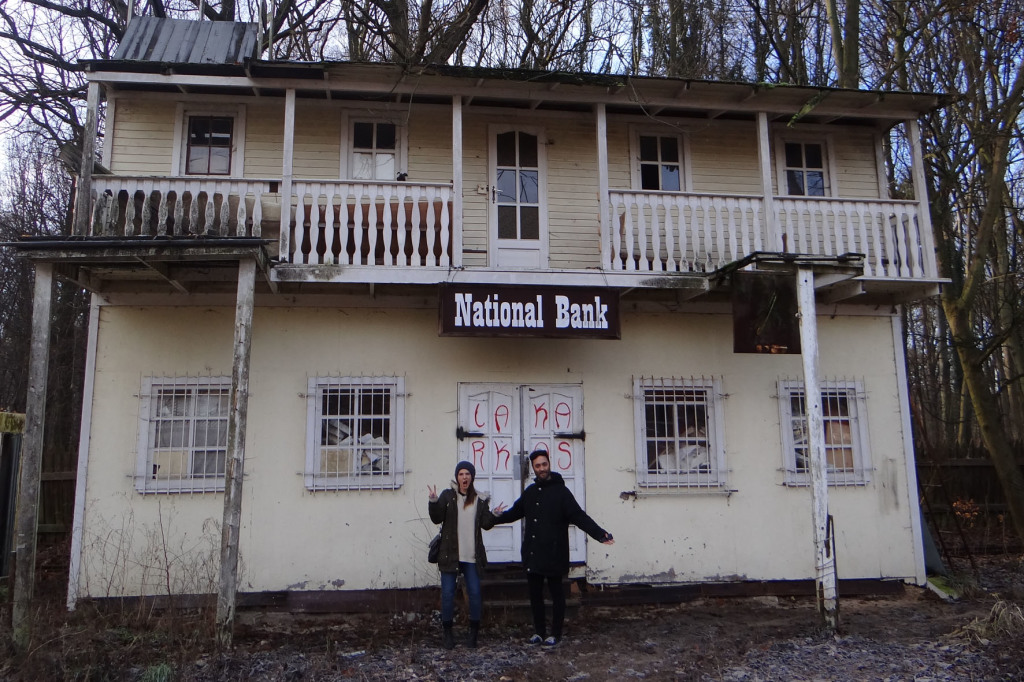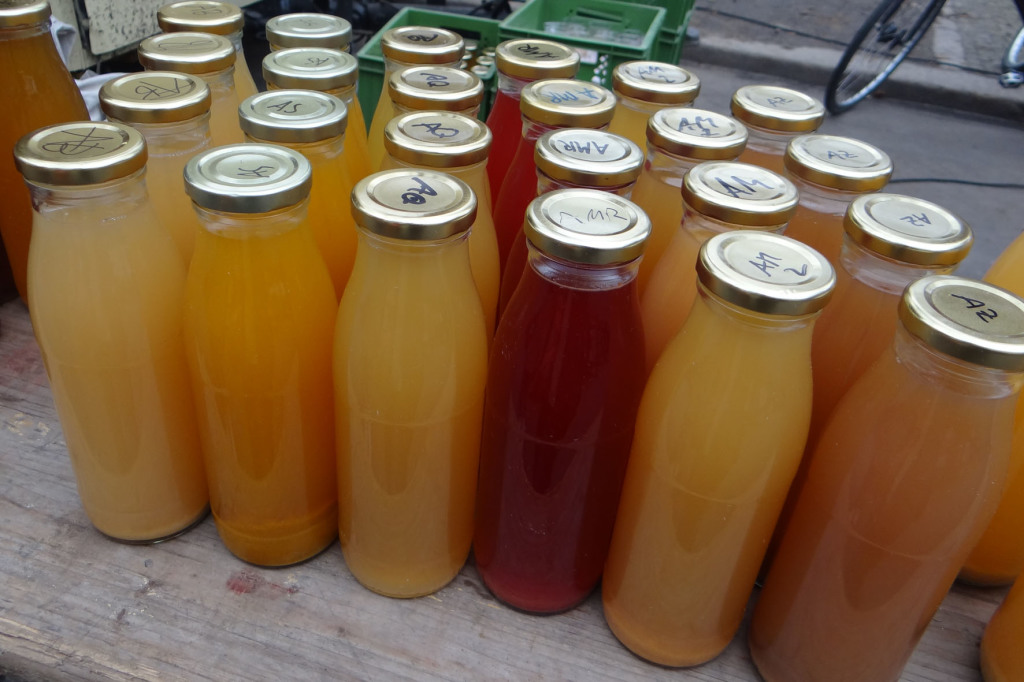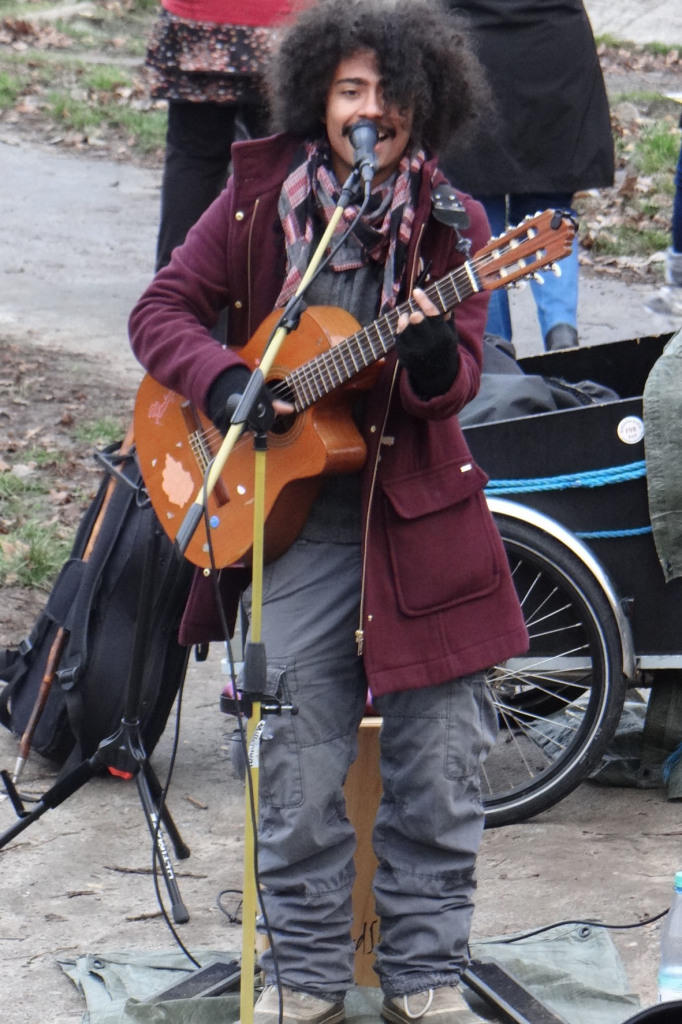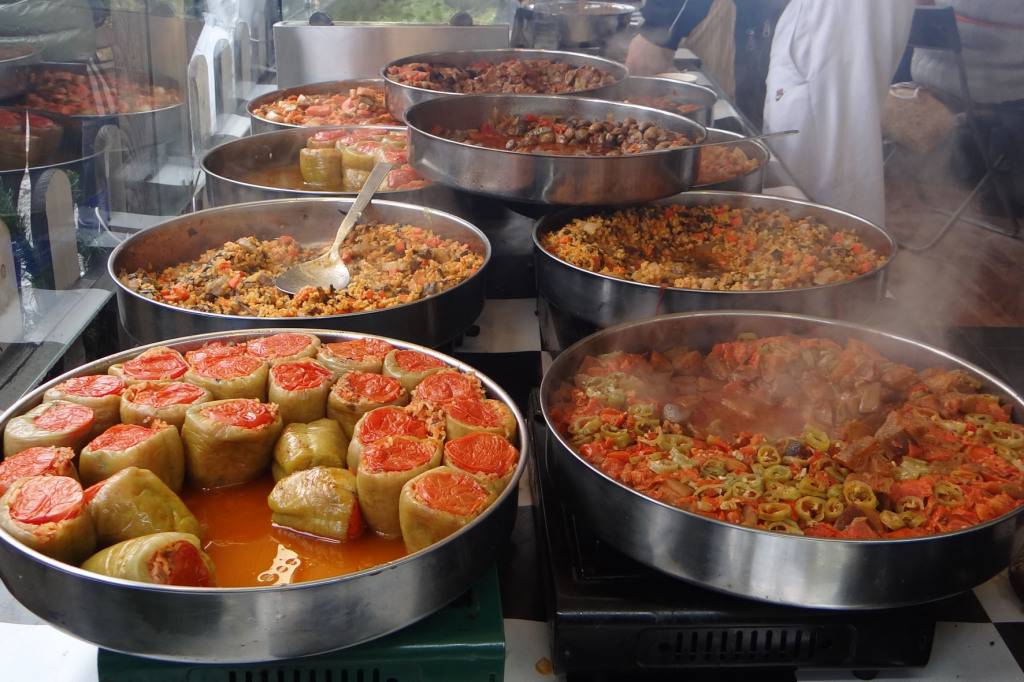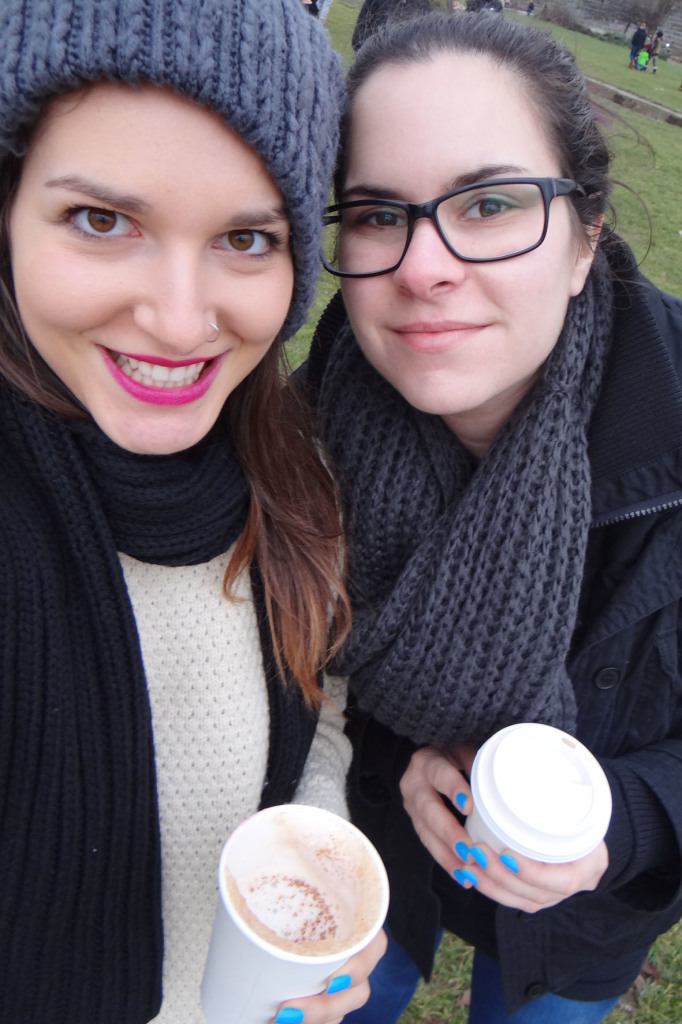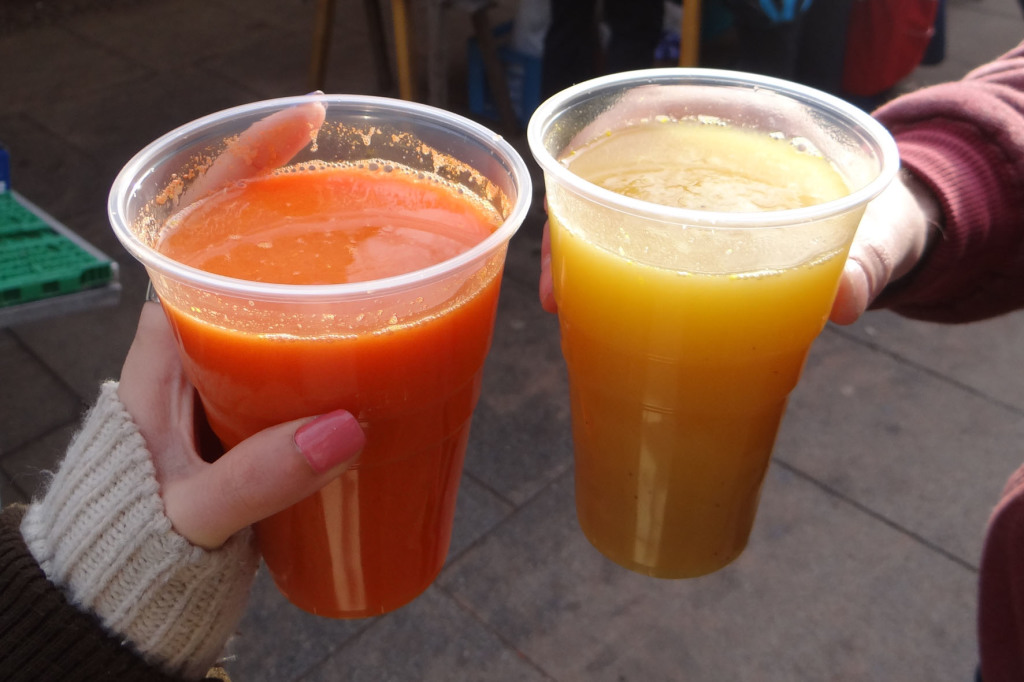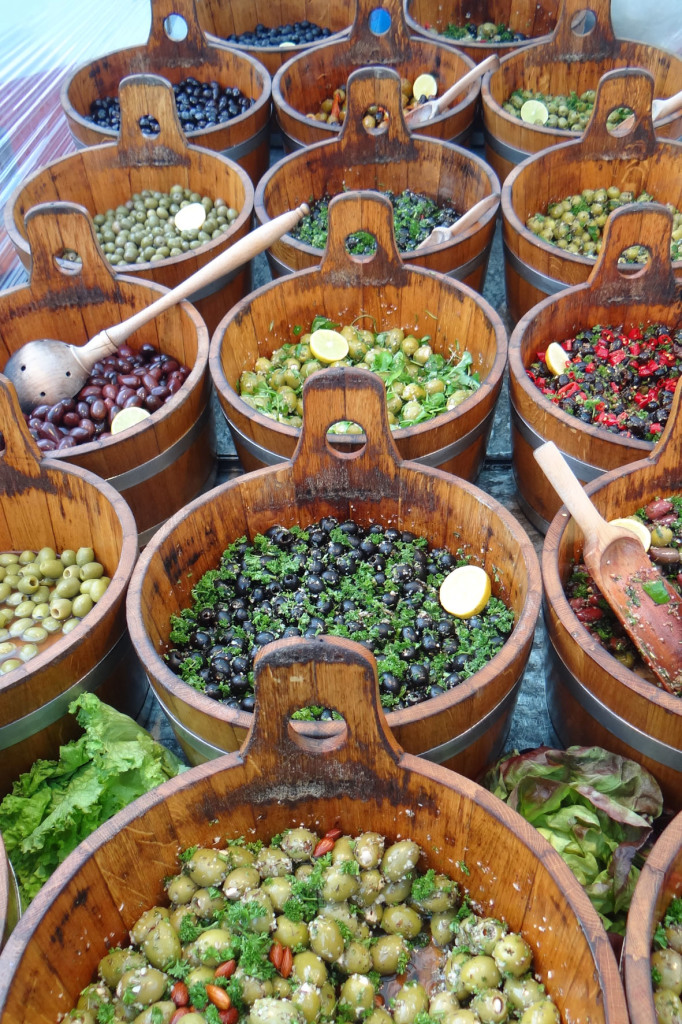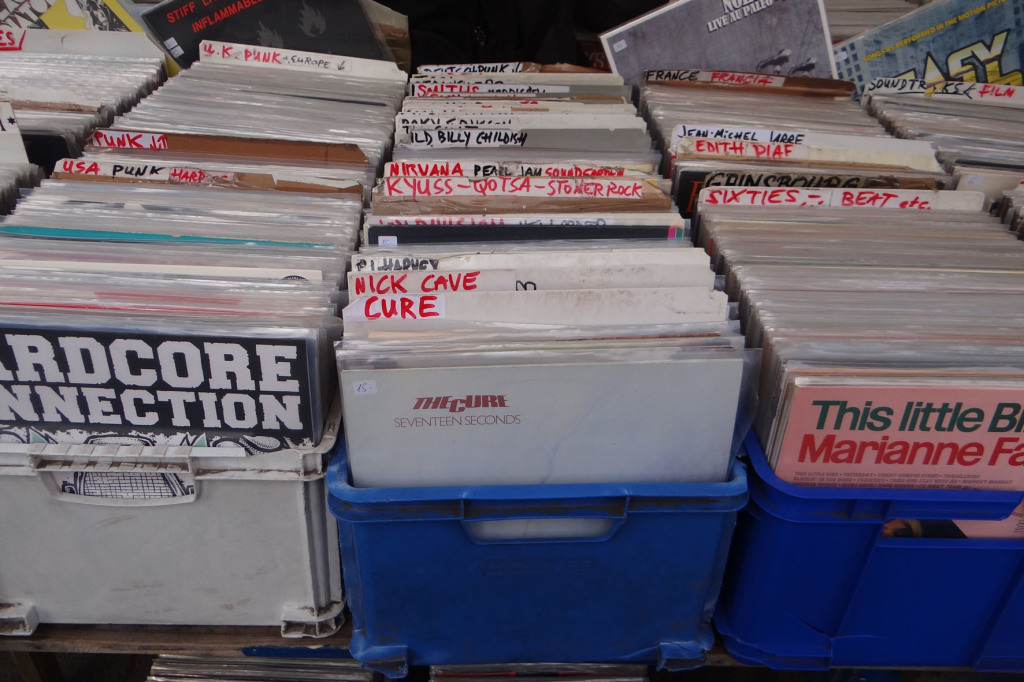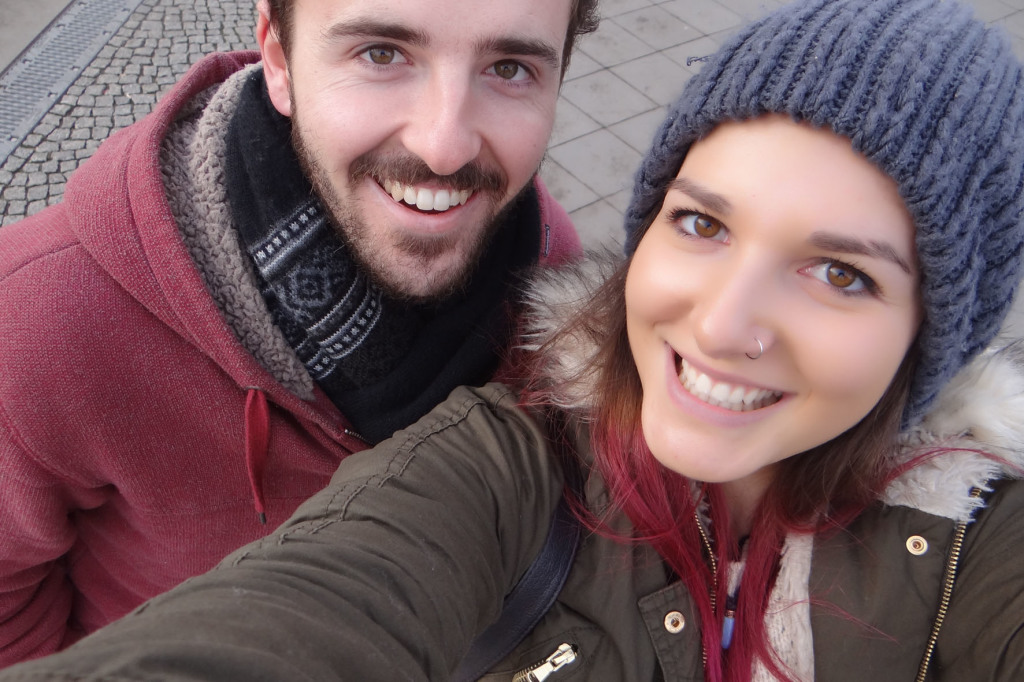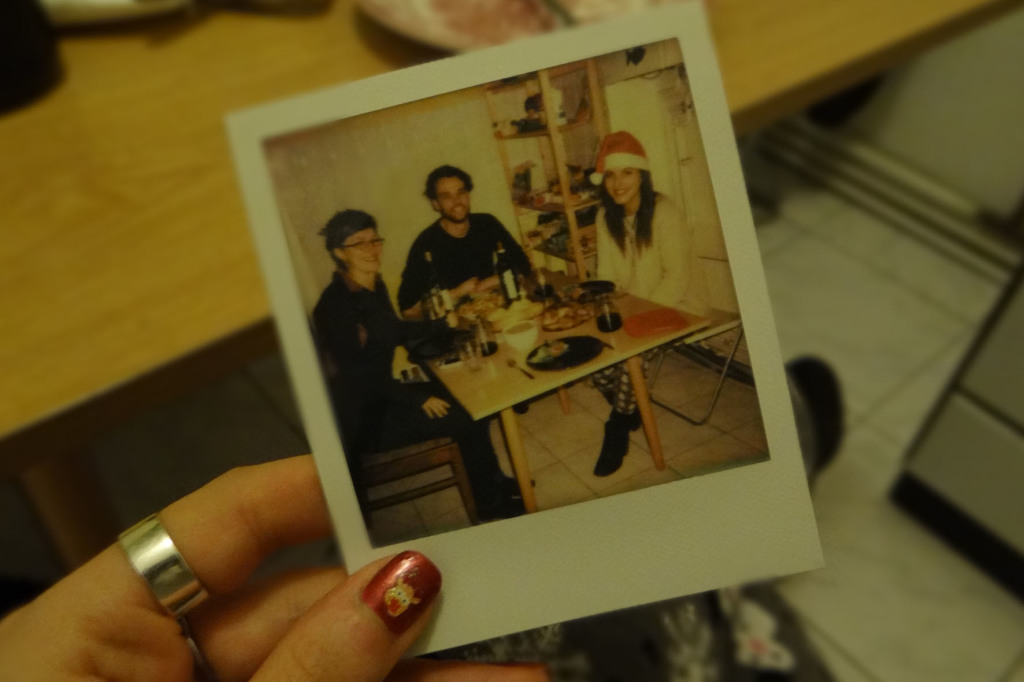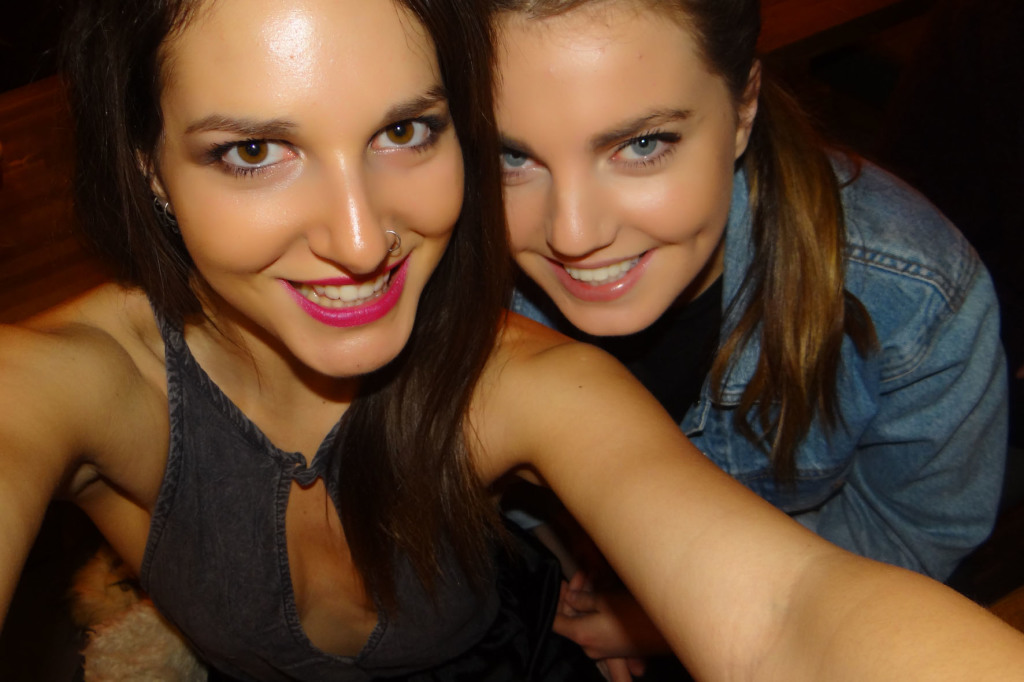Most people will try to convince you that Germany is much better in the summer. While that is sometimes true, these people are forgetting about one crucial German winter winner – Christmas markets. Most of the locals can’t stand the thousands of tourists that flood the streets carrying gluhwein and gingerbread, but when you’re a tourist it never gets old. Seeing more than 80 Christmas markets was fantastic and, like the little child I am, I made an effort to visit each and every one during my stay in each German city. If you have the chance to visit Germany both in summer and the winter, definitely try to do so. Although it is easier to navigate the historical delights of Berlin in summer, the rest of Germany is magical in snowy winter.
I began my German adventure in Munich for – what else – Oktoberfest. Thousands and thousands of people of all ages fill the city, the men dressed in their Lederhosen and the women wearing Dirndls, eating pretzels and pork knuckle while chugging down steins of beer and riding rollercoasters. If you happen to be floating around Europe at the end of September, it’s definitely worth checking out Oktoberfest.
Booking your accommodation in advance is a must as beds fill out quickly. If you’re not too fussy about where you stay because you won’t ever be home anyway, The Tent is cheap and reasonably good. Picture 100 bunks in a large tent with lockers, communal school camp-style bathrooms, a canteen and large outdoor bonfire for only $AUD35 (€25) a night. You can also bring your own tent and set up camp or sleep on the floor for €15, but you must still book a spot! Unfortunately, after spending four days at Oktoberfest my body was ruined and I didn’t have the energy to actually explore the city. I met some people who stayed in Munich for five or six days, having one day to drink and one day to recover and explore, because Munich has a lot to offer besides copious amounts of beer!
Wanting a little bit of down time, I ventured to Frankfurt and stayed at the Five Elements Hostel, which is located close to the bus and train station. Don’t be concerned about staying in the Red Light District – during the day it’s really not dangerous. Though I had no issues at night, if you’re feeling concerned don’t walk home alone. The location makes for a colourful atmosphere at the hostel, and I spent my mornings people watching through the large windows at Five Elements Hostel while I enjoyed my breakfast. The hostel is a little large, but they offer great events each evening to get everyone together in the bar downstairs, so you will have no problem meeting anyone. The bathrooms are probably the best I have ever experienced in a hostel, because they are very clean and private and the shower heads are massive. A night there will cost you around $AUD34 (€24) during the peak season, but while this is expensive the facilities make up for it, especially if you’re coming direct from Oktoberfest.
I was in Frankfurt during a massive food festival – perfect timing. The streets were bursting with meats, cheeses, lavender, fresh fruit and my all-time favourite German dish, Currywurst.
Take a look at the ‘gingerbread’ houses in the old town square; they’re so cute and you may also be lucky enough to see some newlyweds. Walk down to the river for a beautiful stroll and check out the many stalls along the path selling homemade trinkets. Need to catch up on your shopping? You will find the main strip filled with shops including H&M, Urban Outfitters, Primark and many more. If these shops aren’t what you’re looking for stick around until the weekend for Frankfurt’s ridiculously massive flea market. You can the find the market along the river, stretching out over three bridges with many different things to find. I spent hours and hours getting lost in it and mingling with the locals.
I left Germany and returned in winter, just in time for the Christmas Markets, also known as Christkindlmarkt or Weihnachsmarkt. My next adventure began in the beautiful, artistic city of Cologne, where I spent my time dipping in and out of secondhand shops and following the treasure hunt of fantastic street art around the city. I stayed at Station Hostel and though it may not have much of a common room, its great location near the main train station and the Dom Cathedral made it an incredibly useful base. The staff is fantastic and very helpful, and who doesn’t love sleeping in a single bed for only $AUD25 (€17) a night? Though Cologne is small, buy a transport ticket as things are further apart than they may seem, or make friends with a local student and ride with them for free on weekends.
When exploring the Christmas markets, you’ll find that each city has scattered them around and that each has a different theme, for example the Market of Angels or Winter Wonderland. Some may just have small stalls selling Christmas decorations, gluhwein (mulled wine) and every ‘wurst’ from bratwurst to currywurst, but the larger ones can have rides and attractions. Even though they’re all essentially the same, it’s so much fun seeing as many as possible! Some cities may only have one market, but many have at least five and some even 80! The themes are diverse and exciting and I loved walking around listening to Christmas carols with a gluhwein in one hand and a bratwurst in the other.
Dusseldorf stole my heart and if time is no object I highly recommend that you go. Travelling from Cologne only costs €12 and this easy journey is worthwhile. It’s extremely small and perhaps Christmas enhanced my experience there, but I met a brilliant group of friends and together we made this city incredible. I stayed at Backpackers Dusseldorf, which was central enough to walk into the main city as well as very close to the train and bus stations. The hostel includes a delicious German breakfast, comfy beds, very helpful and friendly staff, internet access and spacious bathrooms for only $AUD29 (€20) a night during the peak season.
Spend hours walking in and out of small streets around the city, window shopping at the luxurious boutiques and finding small unique shops full of goodies. Look out for the main strip of pubs and bars on Bolkerstrasse, where you will find a little restaurant with a gigantic pig out the front. Sit down outside and order a pig roll, known as ‘Schwein-Brötchen’ – it will change your life. Check out Schickimicki in Altstadt and Schaukel, two very awesome bars. There are also some great Breweries by the river, and as we all know Germany has some of the best beer in the world!
Why not head up to the north of Germany to Hamburg and Luneburg?
Hamburg is a larger city, the second largest in Germany, inhabited by the lovely Hamburgers. To see the real Hamburg you need to detour from the tourist track and make your own adventure and the city is best enjoyed in the warmer months when it fills with live music and free events.
While in Hamburg, head down to the harbour and walk along the waterfront of the third largest port in the world. If you take the water taxi, you can travel the same route the private tours take but at a fraction of the price, and if you’ve bought a train ticket for the day the water taxi is even cheaper! Enjoy people watching? Grab a cocktail or a beer along the Reeperbahn, which is home to Hamburg’s red light district and enjoy the interesting sights. I really wish I had the chance to see the famous fish markets, they’re only open from 5:00 a.m. until 9:00 a.m. on Sundays so you have to get up early – never go to bed and grab breakfast on the way home – but I’ve heard they’re fantastic. Last but not least, go on the Hamburg free walking tour – it’s free and a great way to see the city’s main sites.
Luneburg was such a spontaneous, last minute decision: a beautiful family contacted me via my Couchsurfing account and I jumped immediately at the chance to come and stay with them. Just a twenty minute train ride south of Hamburg, I arrived in the gorgeous, tiny town of Luneburg and back to the family home in Adendorf. If you crave a true German family experience and being around a lovely family, I’ll happily put you onto Katja and her family. They made me feel so welcome as we drank tea around the fire, enjoyed a home cooked hearty meal – something you really do miss after seven months away – and went to cut down their family Christmas tree. The city of Luneburg is magical; think cobblestone streets, old, detailed brick buildings, stunning churches and lovely bridges. You could never tire of this town’s beauty.
I based myself in Berlin for a couple of weeks, which gave me the opportunity to take some short trips to cities like Dresden and Nuremberg. These cities are small enough to enjoy for just one day, but due to travel time I spent two nights in both Dresden and Nuremburg, giving myself a full day and a half to explore both cities.
In Dresden you can explore the large university and take a long walk through the old town, exploring the rebuilt historic buildings and beautiful view of the water. Head into the new town for funky bars, cafes and quaint boutiques, but make sure you stay for the evening because this student town likes a party.
Nuremberg is known for having one of the best Christmas markets in Europe and though it was fantastic, after seeing many Christmas markets all around Germany I didn’t find it particularly special. It’s worth coming to Nuremberg to check out the Nazi Museum, which is both confronting and extremely interesting and to walk up to the castle for a beautiful view of the city. If you are there during the Christmas period, instead of ordering your standard bratwurst from the markets make sure you order Nuremberg’s very own ‘Drei im wackla’, three mini sausages in bread.
Finally it’s time for one of the most talked about cities in Europe: Berlin. Going to Berlin isn’t just about learning the history; it’s about the alternative fashion, the always open clubs, the decent coffee and the fantastic flea markets. It’s where the students from smaller cities in Germany come to live and where the Australians claim their second home. Berlin is fantastic whether you visit in summer or winter, as there is always so much to do and so many new places to explore.
As I stayed with a friend I’d met on my previous Europe trip the entire time I was in Berlin, I didn’t get to experience the hostel environment. There are far too many to choose from so I contacted a my travel buddy network and they overwhelmingly recommended the two following hostels:
Circus Hostel was a clear favourite I actually wish I had stayed there myself. The hostel boasts large rooms, a fantastic location and a very clean hostel with a two floor café, bar and lounge. This is a fantastic place to meet fellow travellers with great events organised each week, from trivia nights to history talks and the opportunity to ‘drink around Germany’ as they call it on their virtual beer tour. Though Circus Hostel is a little more than you would expect to pay in a cheaper city like Berlin, this hostel is so widely praised that the price of $AUD39-$46 (€27-€32) during peak season must be worth every Euro cent. Besides, who can argue with a 93% rating on HostelWorld?
Jetpak Alternative is described as a brilliant clean party hostel located in Kreuzberg, which is right near all the best food, bars, clubs and secondhand stores. This hostel is welcomes solo travellers with open arms as it’s a smaller hostel that aims to create a friendly and social atmosphere, making it easier for everyone to bond and form lasting friendships. Jetpak Alternative books out quickly during peak season, probably because of their 95% HostelWorld rating, so get in quick to secure your stay for around $AUD33-$40 (€23-€28) in one of their small dorm rooms.
If your stay in Berlin lasts longer than a few days, invest in a train pass. They’re expensive – though nothing compared to Australian prices – but you will thank me later, because Berlin is far too big to explore on foot and the ticket inspectors speak amazing English (as well as many other languages), rendering your spluttered excuses of ‘I don’t understand!’ useless.
Take a few different free walking tours, because each focuses on a different aspect of Berlin. The Alternative Walking tour run by my dear friend Liam is all about the wicked street art and quirkier parts of the city. Liam’s brilliant stories will keep you engaged and he will happily share some great advice on all things Berlin. The standard city walking tour will lead you to the most famous spots in Berlin, including the Brandenburg Gate, the Jewish Holocaust Memorial, Check Point Charlie and Hitler’s Bunker. Both tours very interesting and a great way to see Berlin.
For something different, try a bike tour during the warmer months. See Berlin as the wind flies through your hair, then finish up by having a drink at one of the many bars along the Spree.
Of course, a trip to the East Side Gallery is a must:
Don’t forget to break into the infamous Spreepark, the abandoned theme park. Most people have heard about it, but be warned that it’s becoming harder and harder to get into. We were lucky because there are fewer security guards in winter, but during the summer the park is full of them. You have the climb fences to get in, but once you make it inside it’s incredible! Mist and darkness lend to a creepy, mysterious vibe, but even in clear daylight this park is awesome. If a guard catches, don’t play the ‘dumb tourist’ card – they speak perfect English. They may fine you or threaten to call the police, just play it cool. If you are taking photos, make sure you have a back up memory card, as if they see a camera they will make you delete all your photos!
If you’re into markets like me you’ll love the markets that Berlin has to offer.
First we have the Kollwitzplatz Farmers Market: a small farmers market with fresh produce and live music.
Then head to Maurepark Flohmarkt, Berlin’s largest flea market and my absolute favourite market to get lost in. It’s really cool but because it’s so well known the prices are ridiculously inflated. Nevertheless, the food is delicious and it’s still fun to walk around and take it all in.
Markthalle Neun – the Night Food Market: the lines are long and the food sells out fast, so make sure you arrive early to try all the delicious goods. Have fun pushing people out of the way to find a table! It’s war.
Winterfeldplatz Farmers Market: this market is much larger than other famers markets with lots of fresh produce, freshly squeezed juices and ready to eat meals.
Strassedol 7 Juni Flea Market: if you love your antiques and strange unique finds, this market is for you. Rummage through the many trinkets and find yourself a bargain or three.
Arkonaplatz Flohmarkt: this really small flea market has great secondhand clothes and is incredibly cheap.
Boxhanger Flohmarkt: this market had so many pieces that I wanted to bring home to decorate the house with!
Berlin was my last stop before heading home, so I dedicated an entire day to shopping. If you need to shop, Berlin is the place to do it! Every store imaginable can be found in Berlin and the prices are lower than in many other European countries for the same things.
Germany is centrally located within Europe and border numerous countries, so travel to major cities in Germany is direct and frequent. Though you can take the train, especially if you have a EuroRail pass, I would suggest taking the bus and sticking to two bus services: Eurolines (sometimes this can be a little pricey but Eurolines usually has the most direct routes and often has promotions running when you book a few days in advance) and my favourite, Student Agency (once you’ve tried it you’ll understand why it’s my number one).
Prague to Berlin: €34 with Student Agency. Prague to Munch: €32 with Student Agency. Salzburg to Munch: buses aren’t very common for this route so most people choose the short train ride for €30. Vienna to Munich: €46 with Eurolines. Wroclaw to Berlin: €18 with Polskibus. Krakow to Berlin: €24 with Polskibus. Zurich to Munch: €30 with Student Agency. Paris to Cologne: €31 with Eurolines. Brussels to Cologne: €20 with Eurolines. Amsterdam to Colgone: €15 with Eurolines.
For travelling within Germany, use Flixbus for cheap fares that carry you all over the country.
Some of the smaller cities in Germany make hostels harder to find, so I suggest jumping on http://www.couchsurfing.org and setting up an account. I found this was the easiest way to save a few bucks on accommodation. Aside from saving money, making friends with the locals gives you the chance to see places you normally wouldn’t because they will give you the real cultural experience and show you the best parts of their town.
Overall Germany is a huge country and spending almost seven weeks there still wasn’t enough. I would love to go back and experience the country – especially Berlin – in the summer. Take your time through Germany and really get to know the locals or even study there or get a working visa, which I recently found out is easy for Australians to obtain. The Germans may not understand our Aussie humour, but they are a delightful bunch and the country was a great way to end my incredible eight month adventure.

